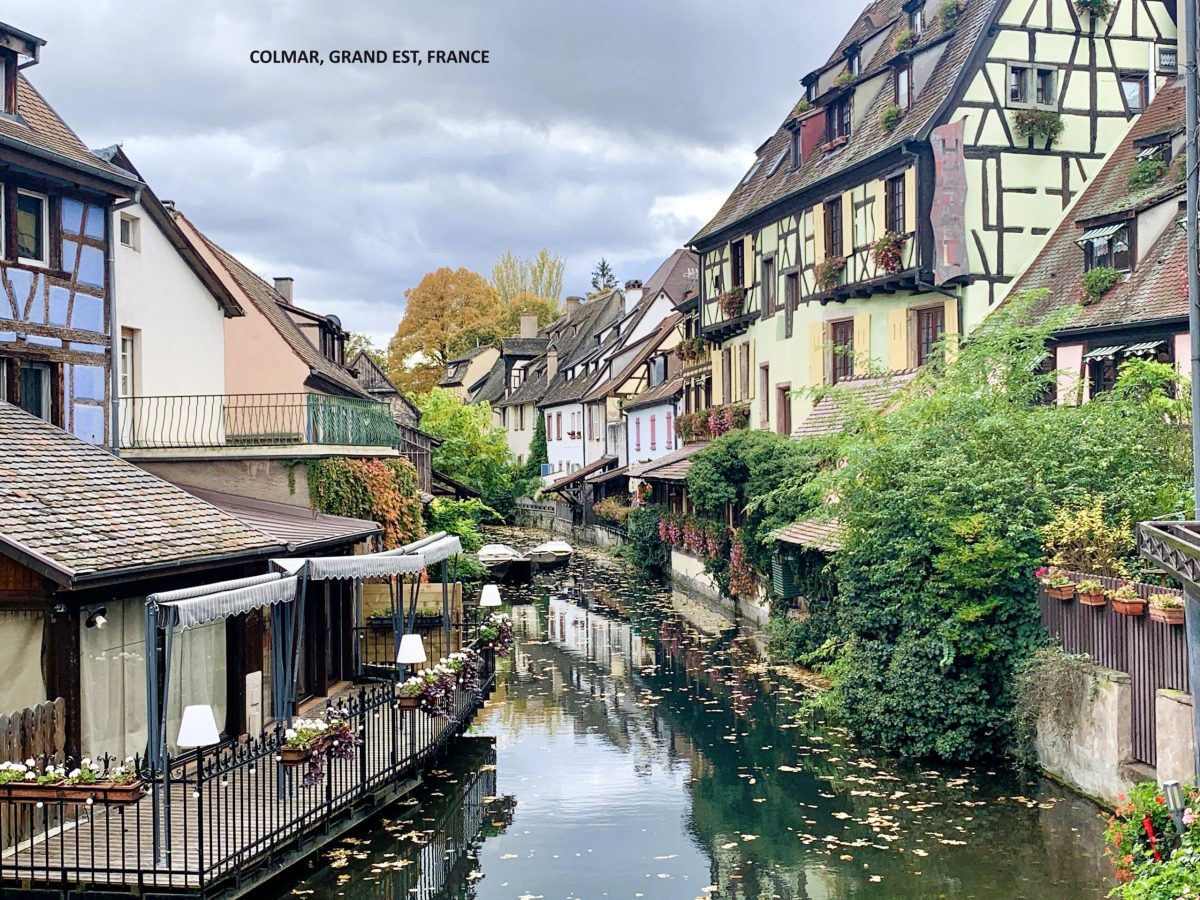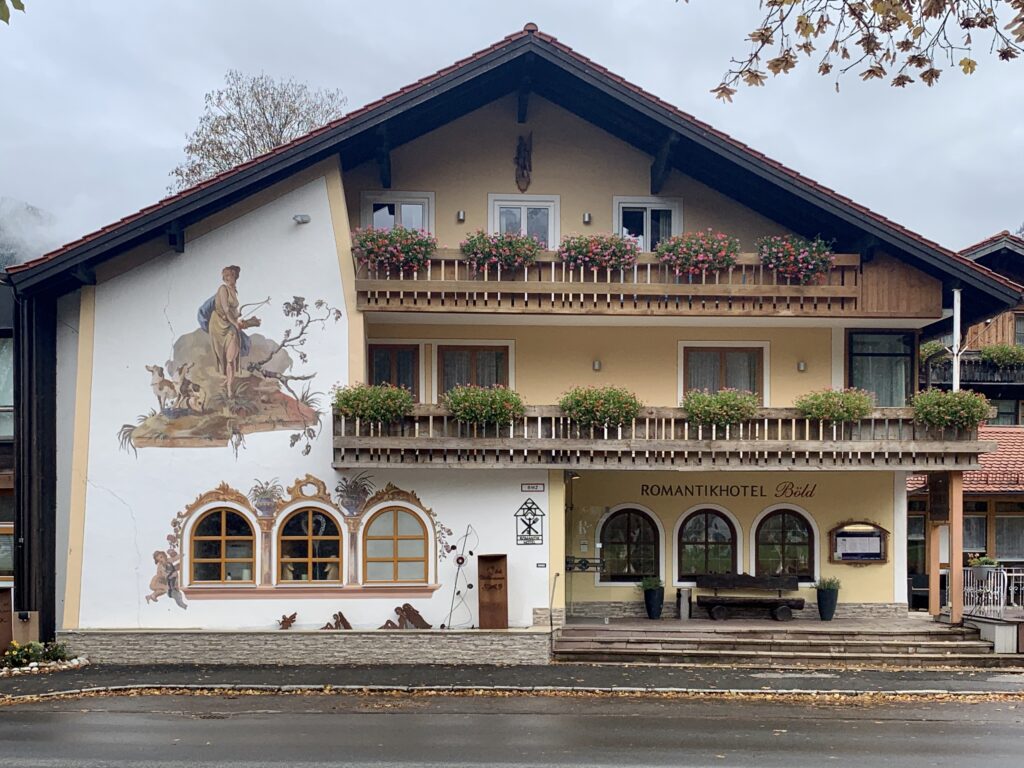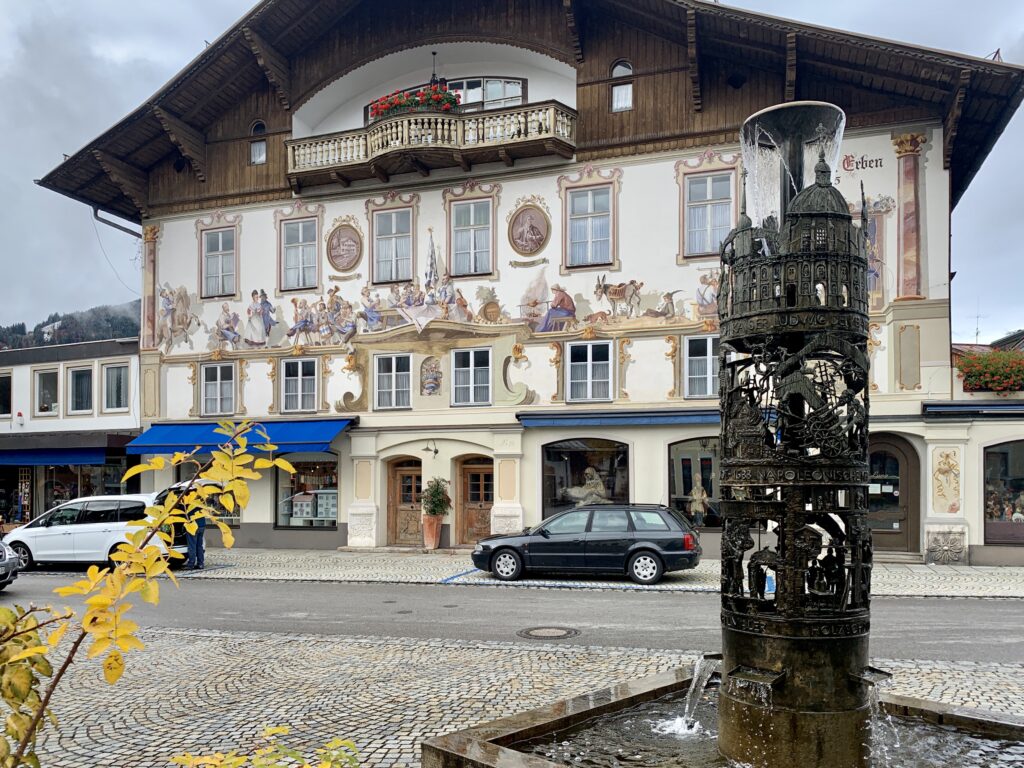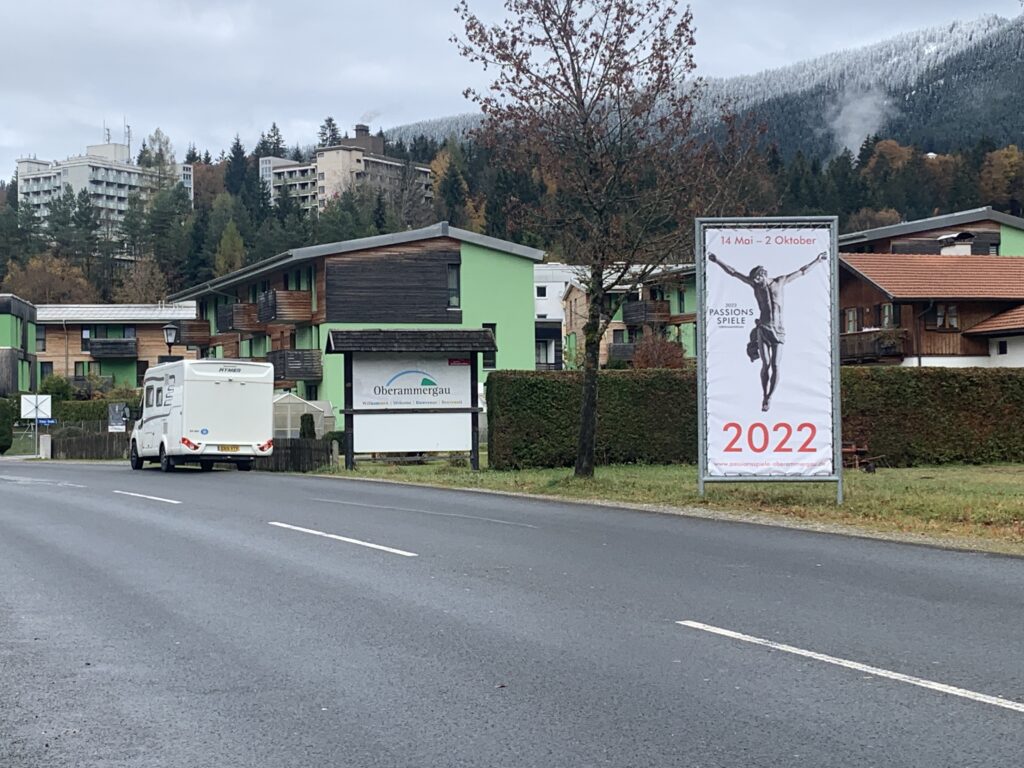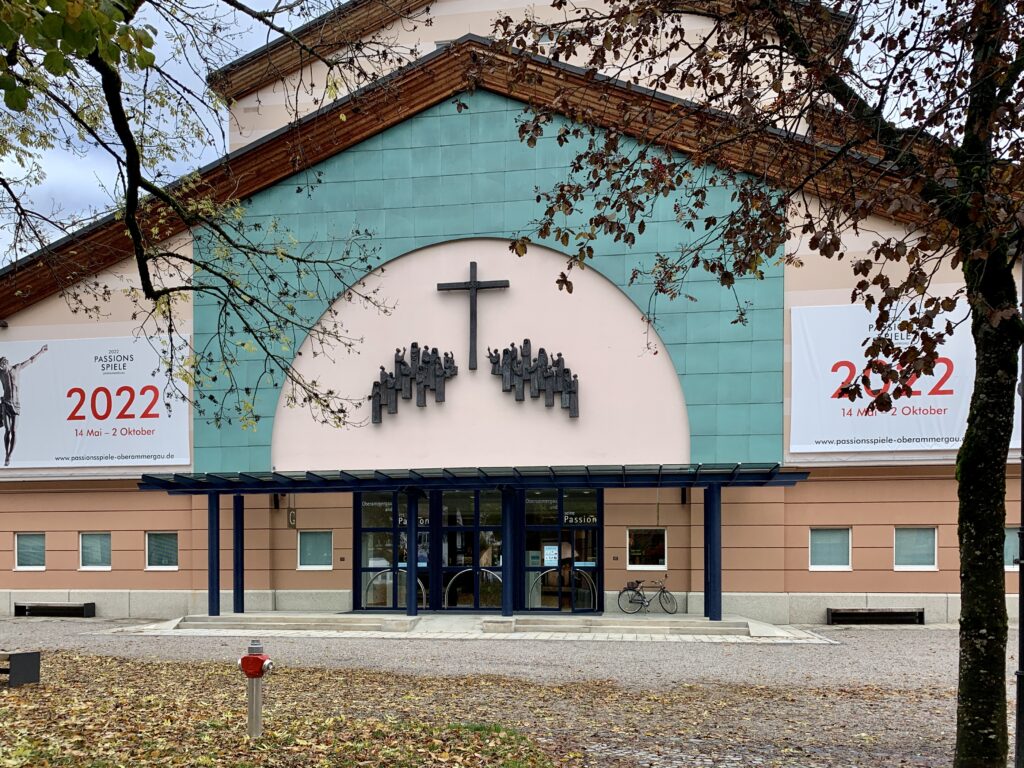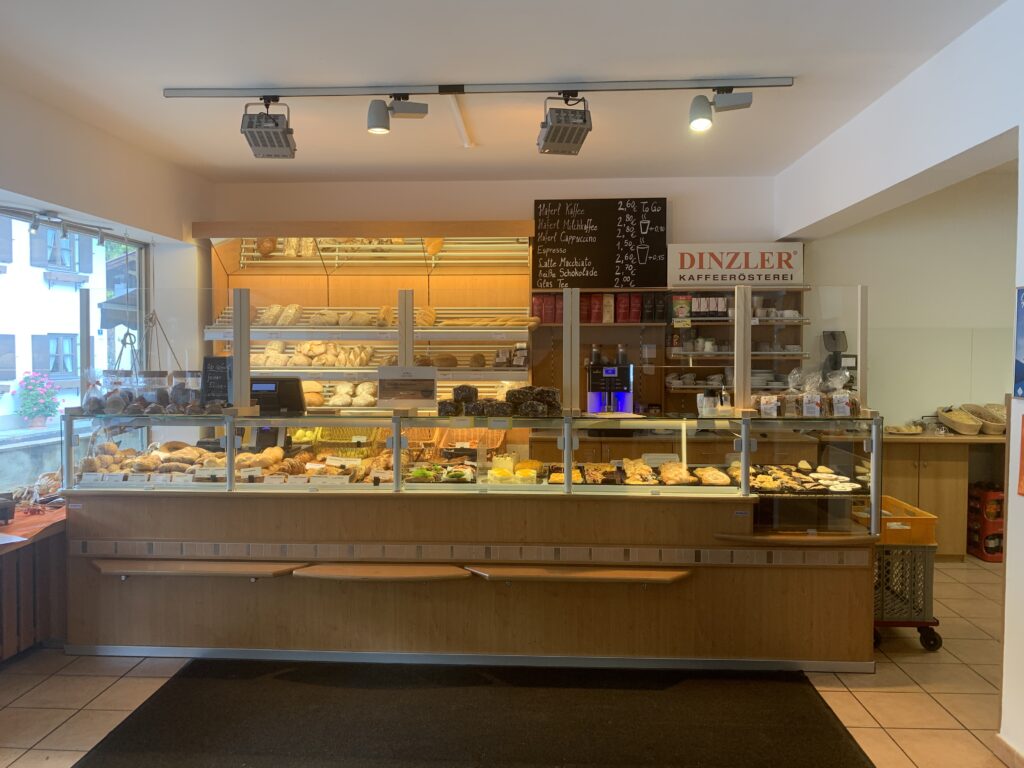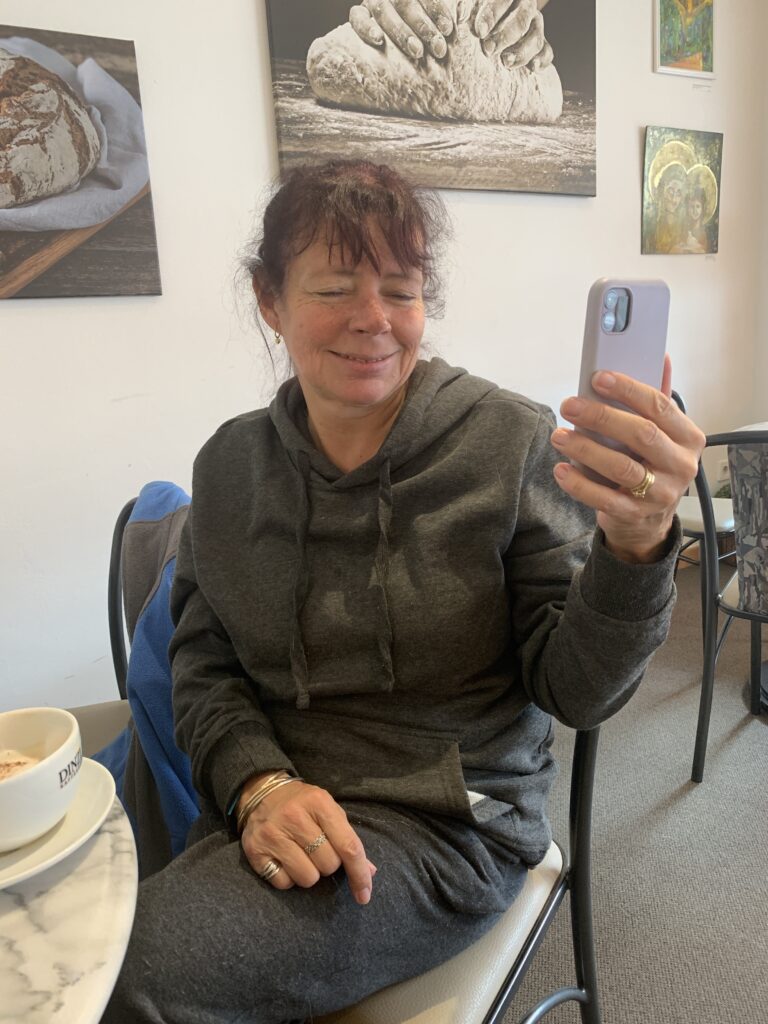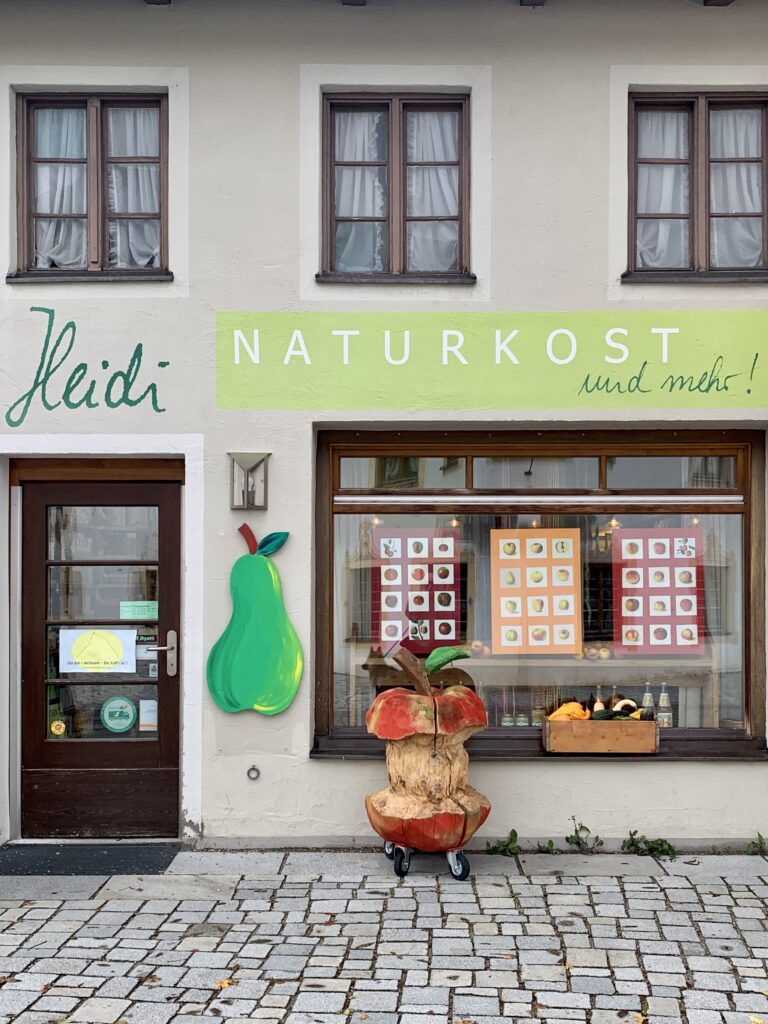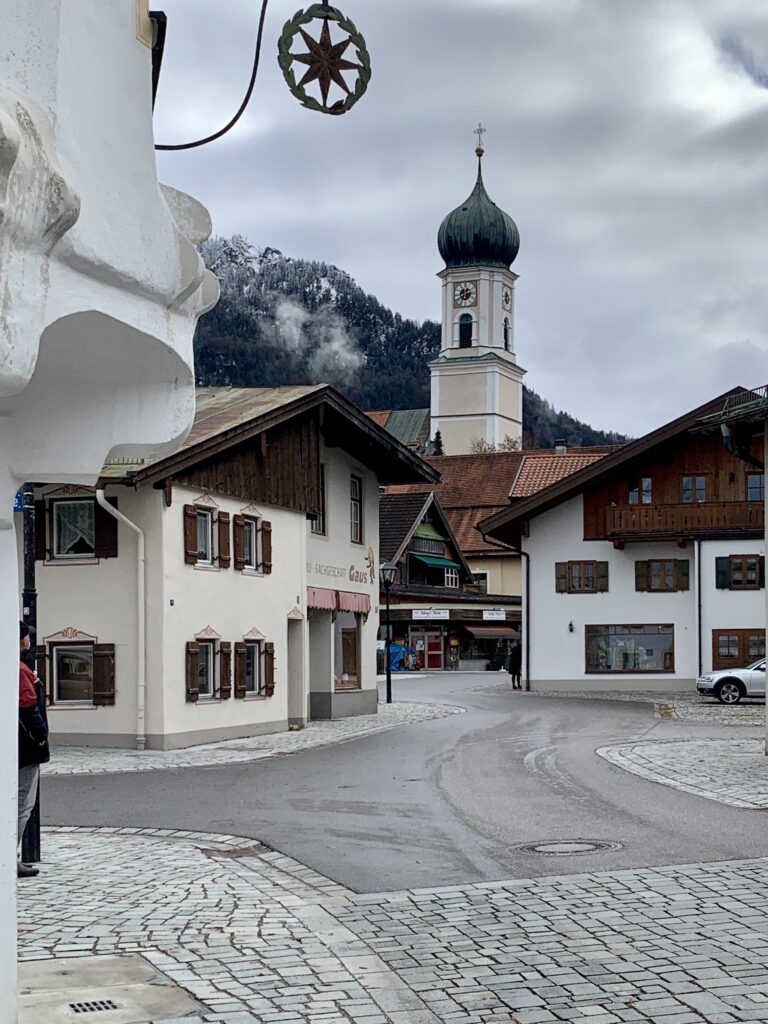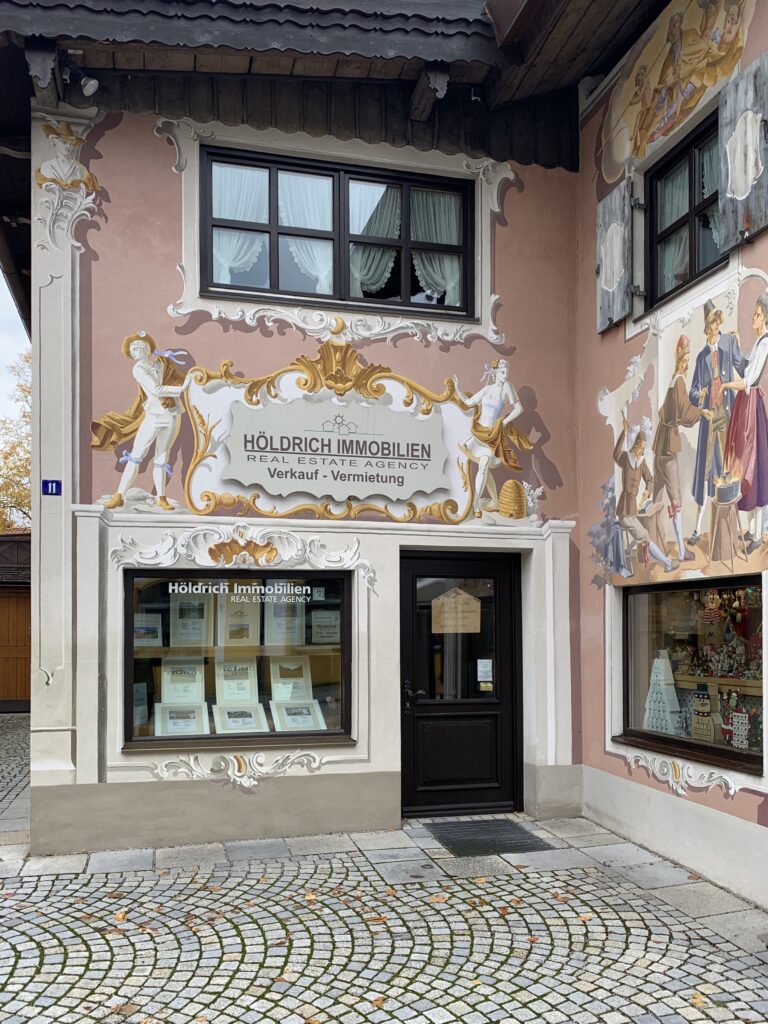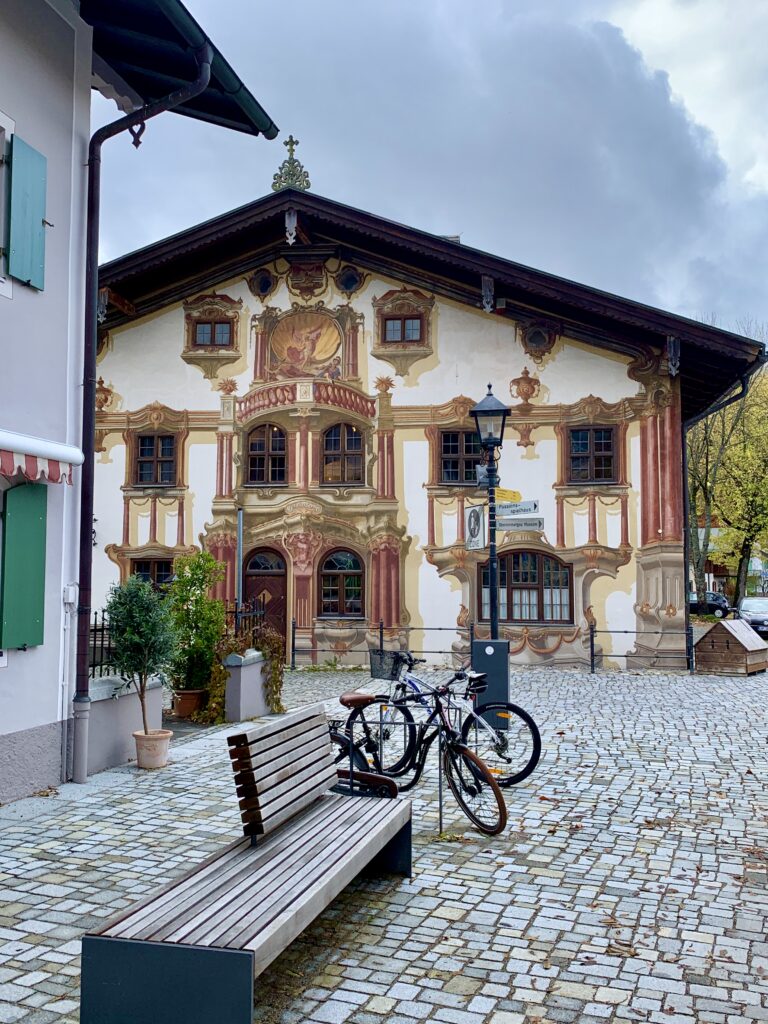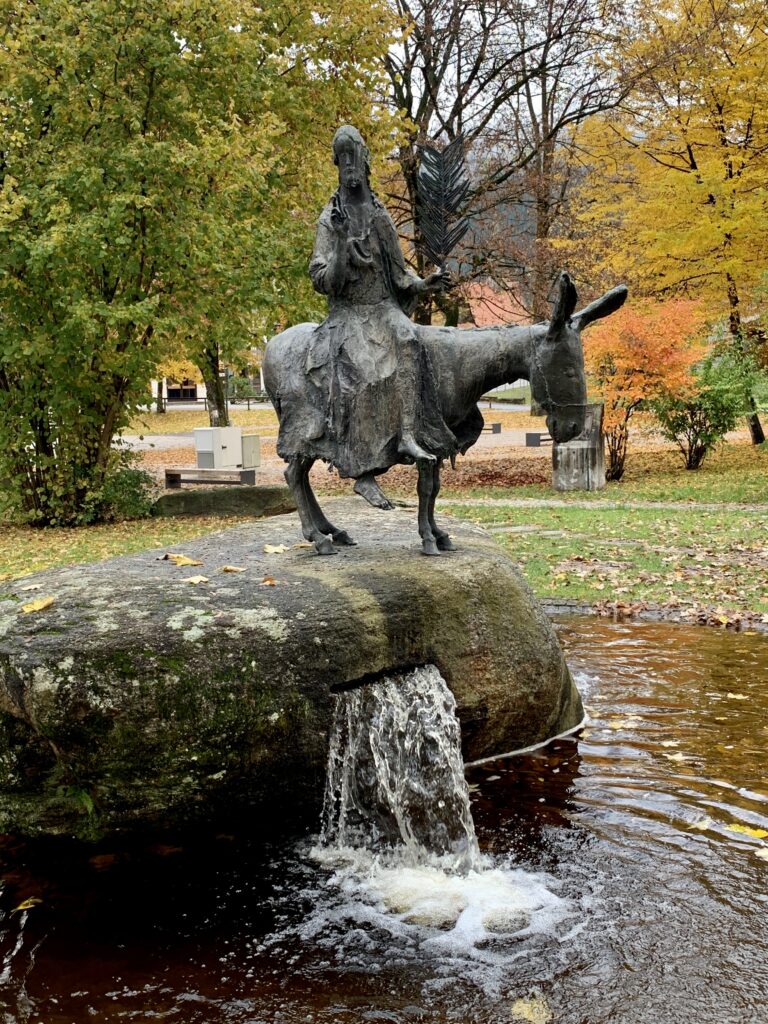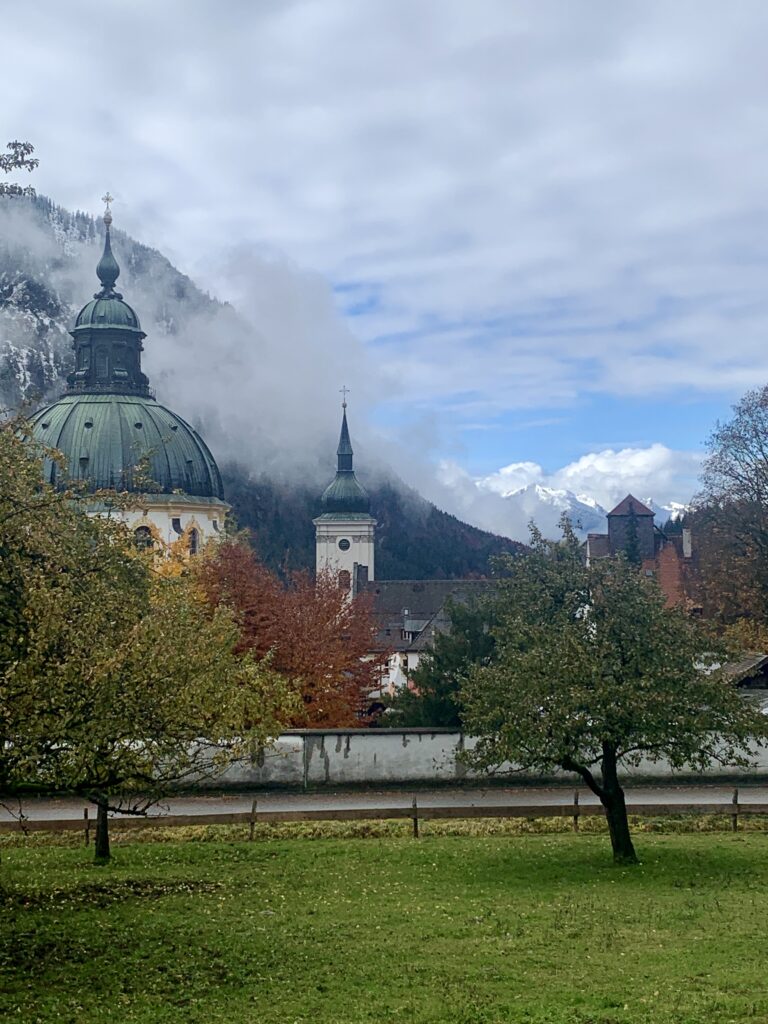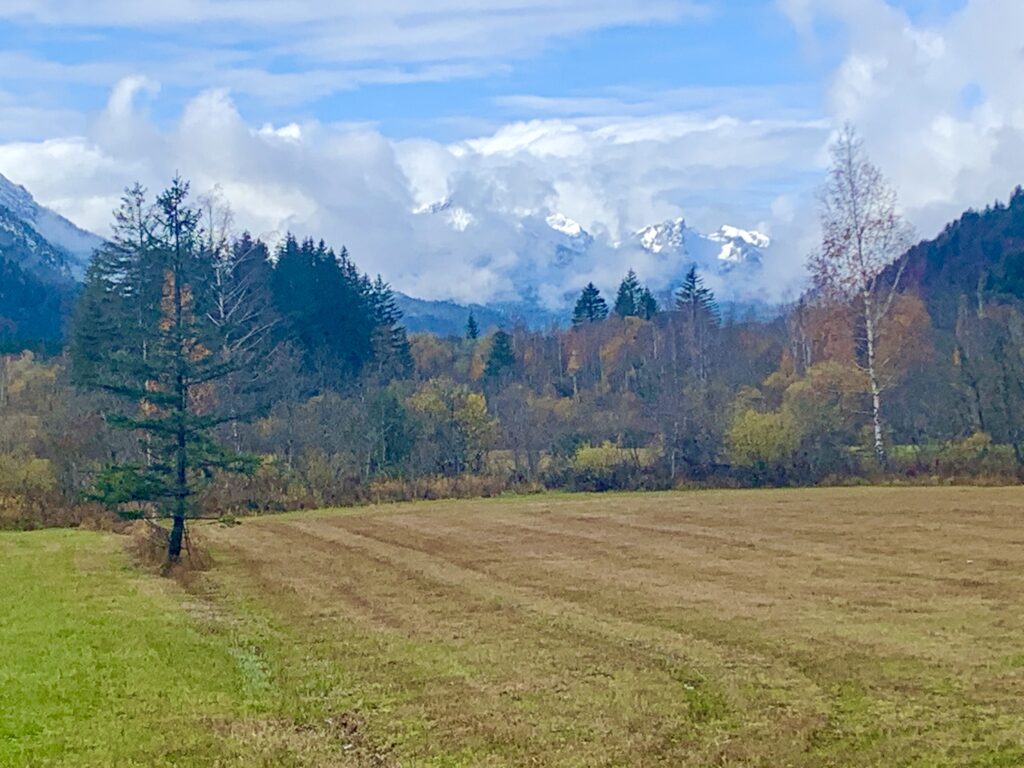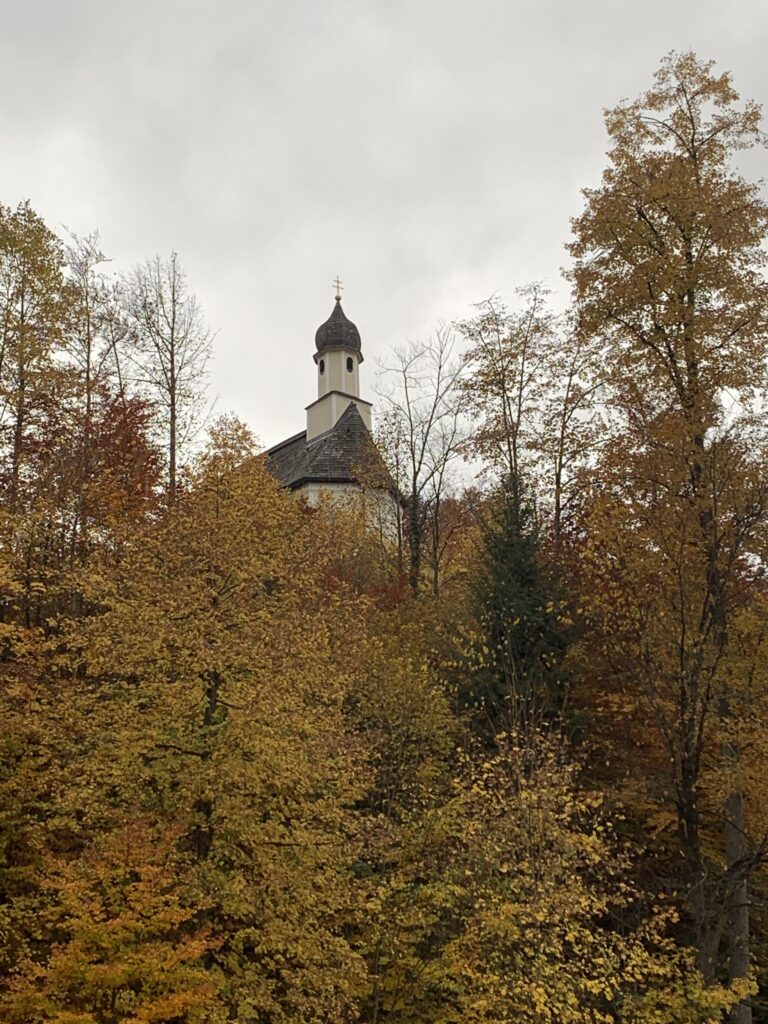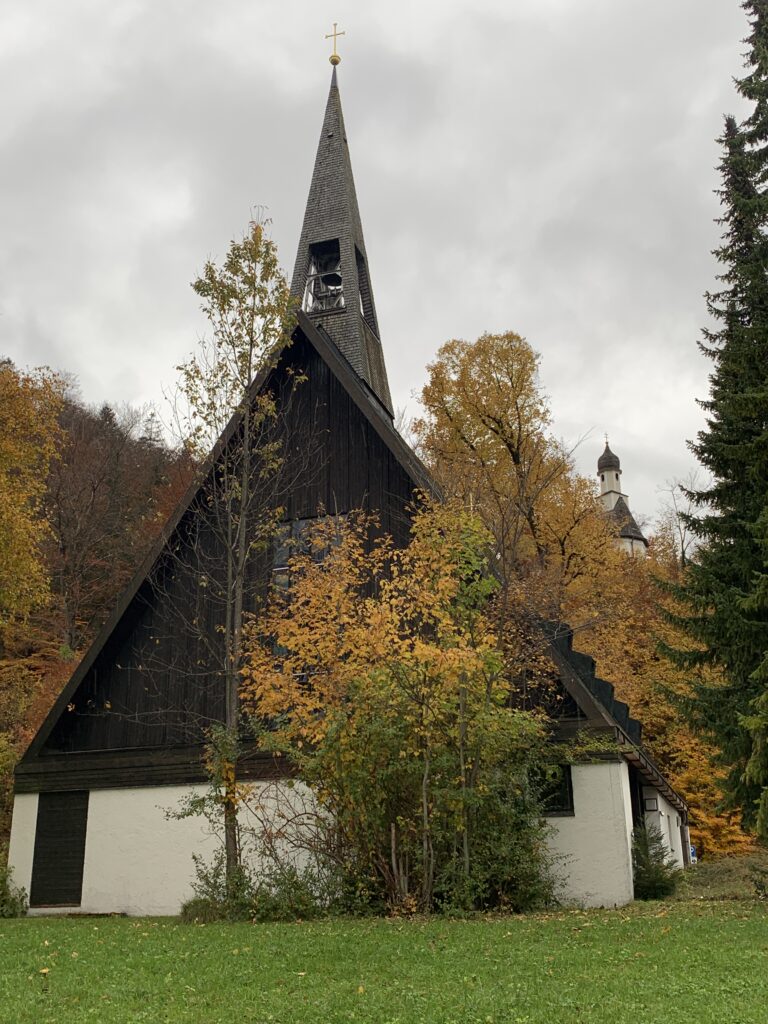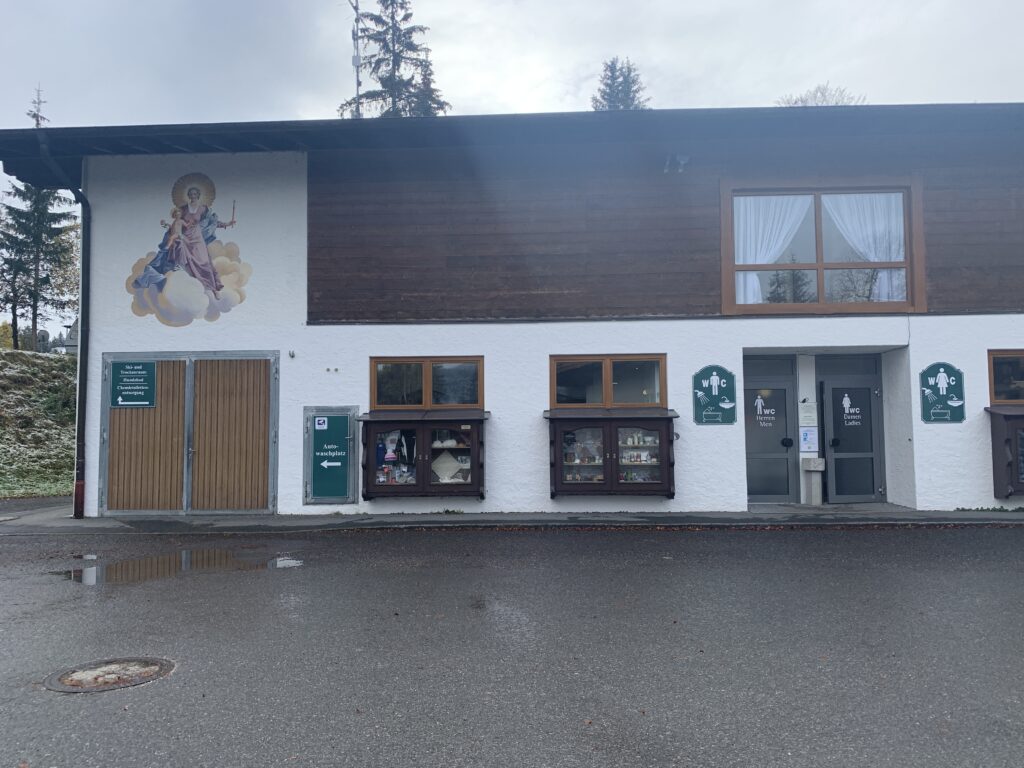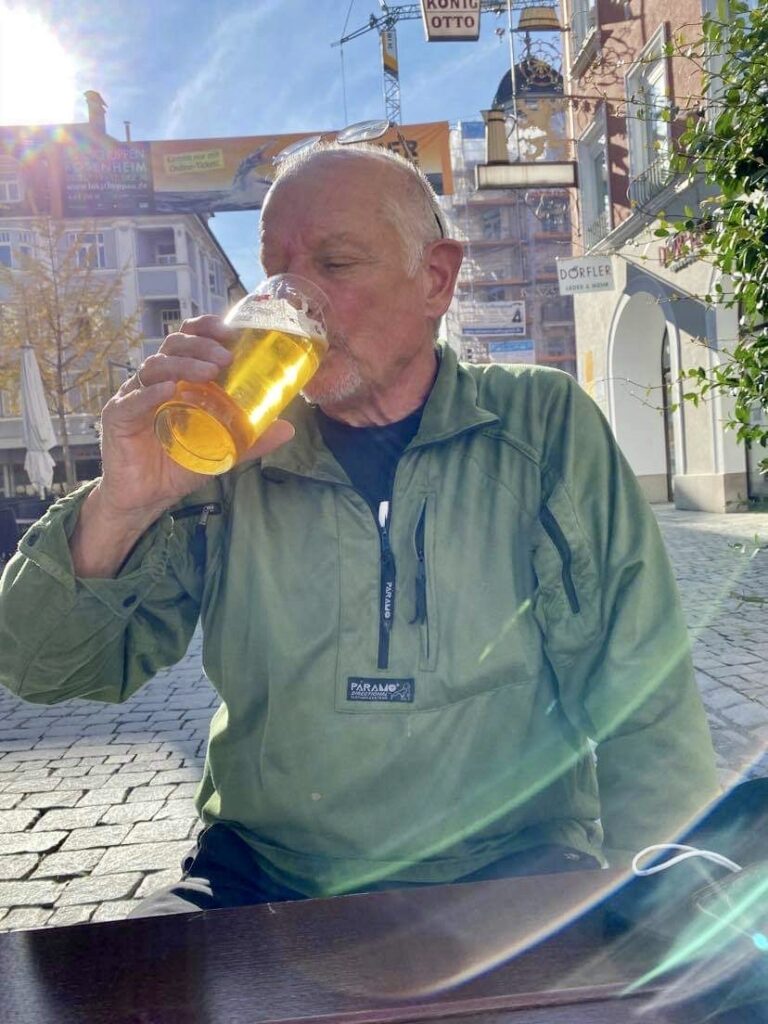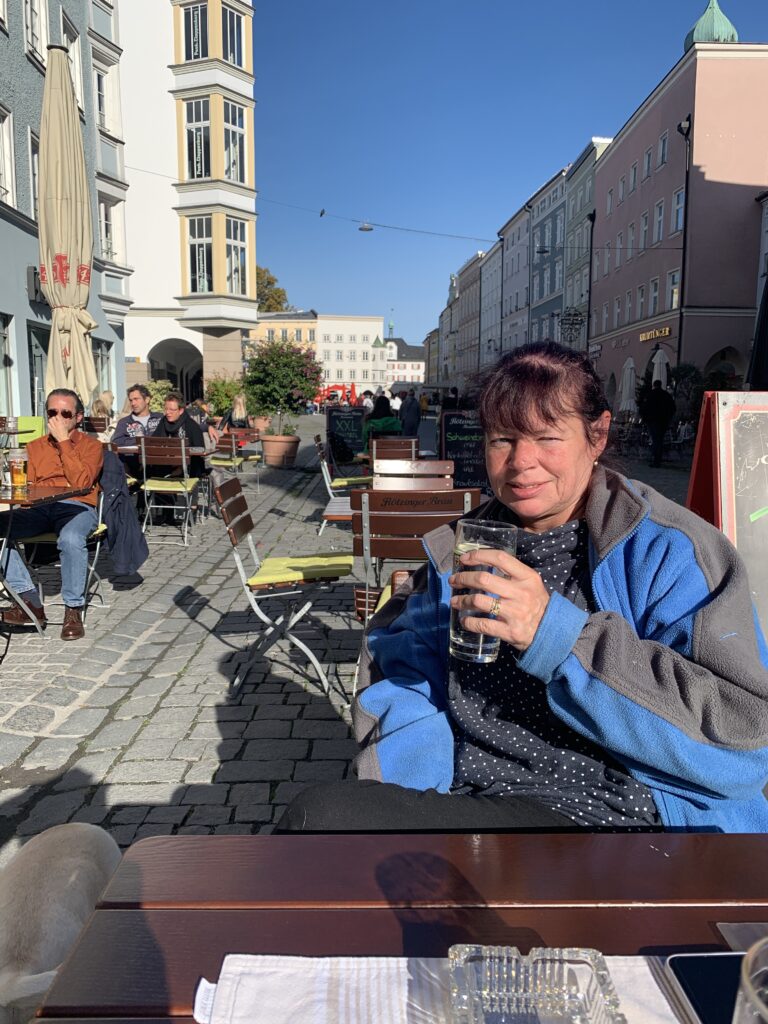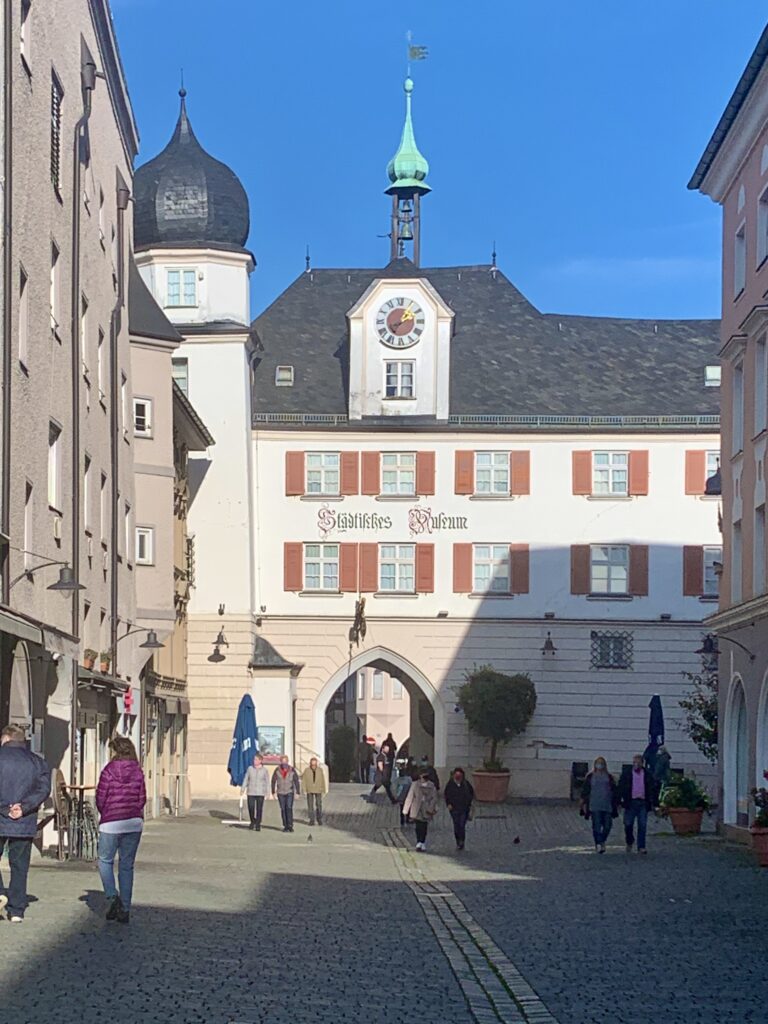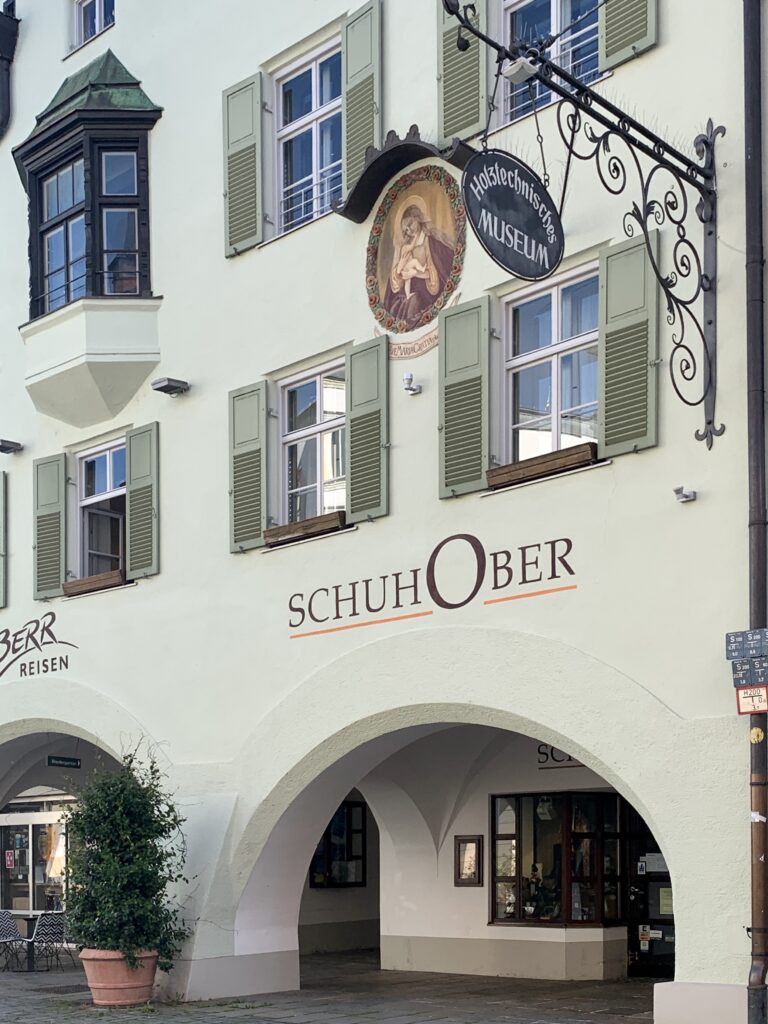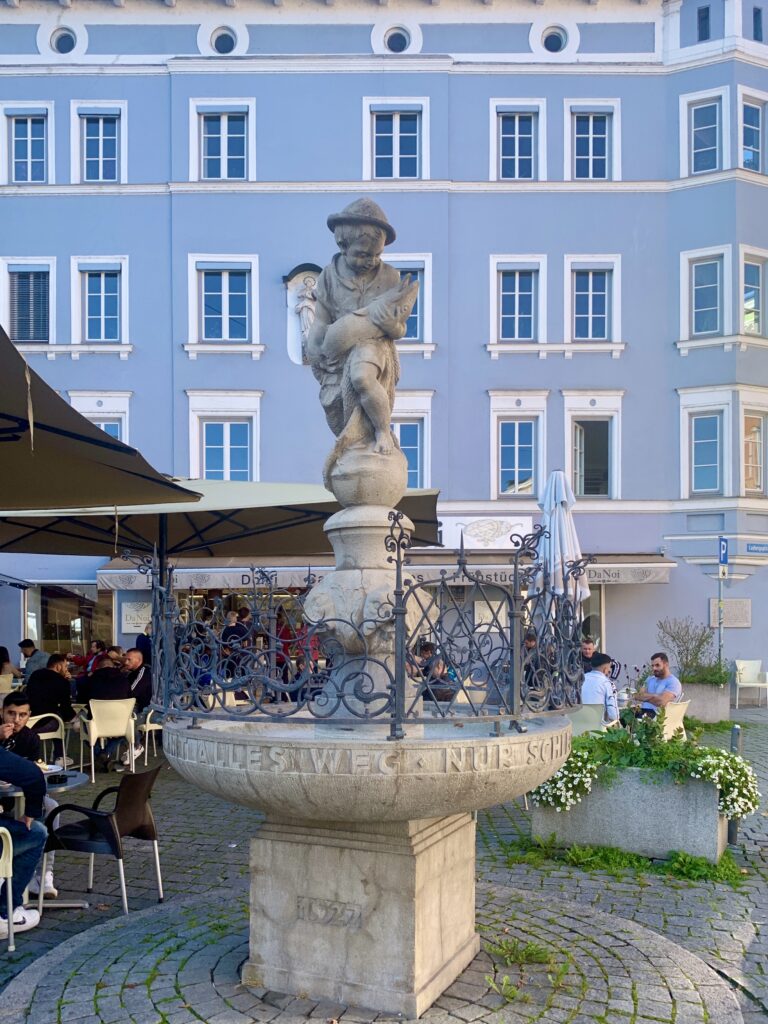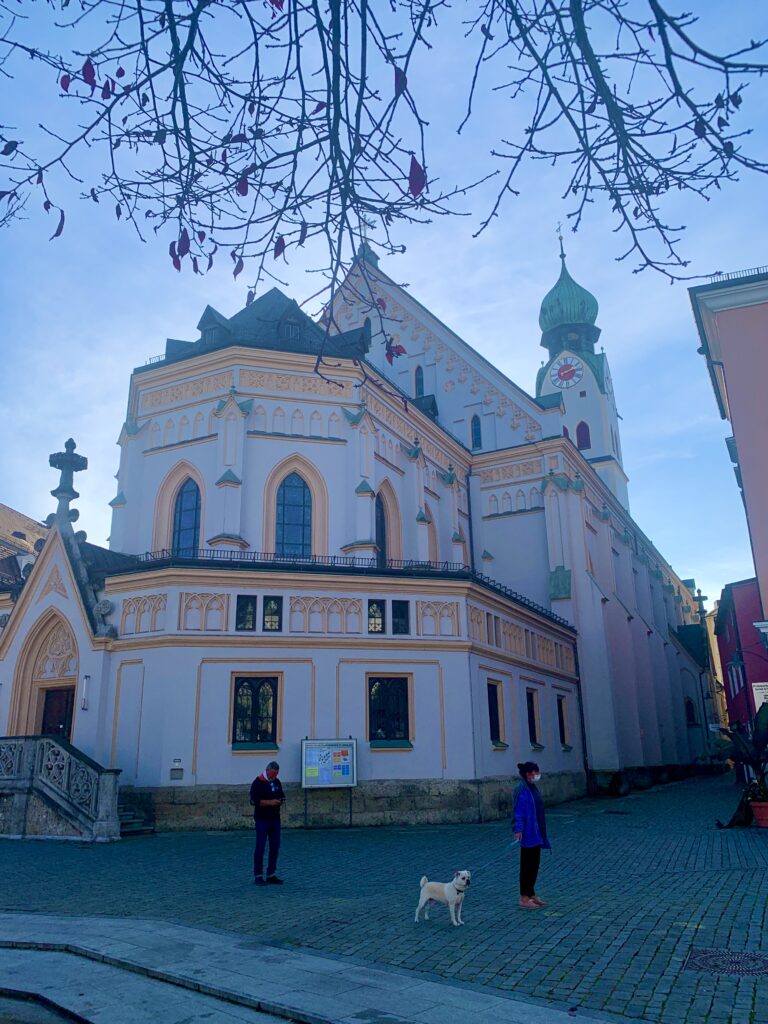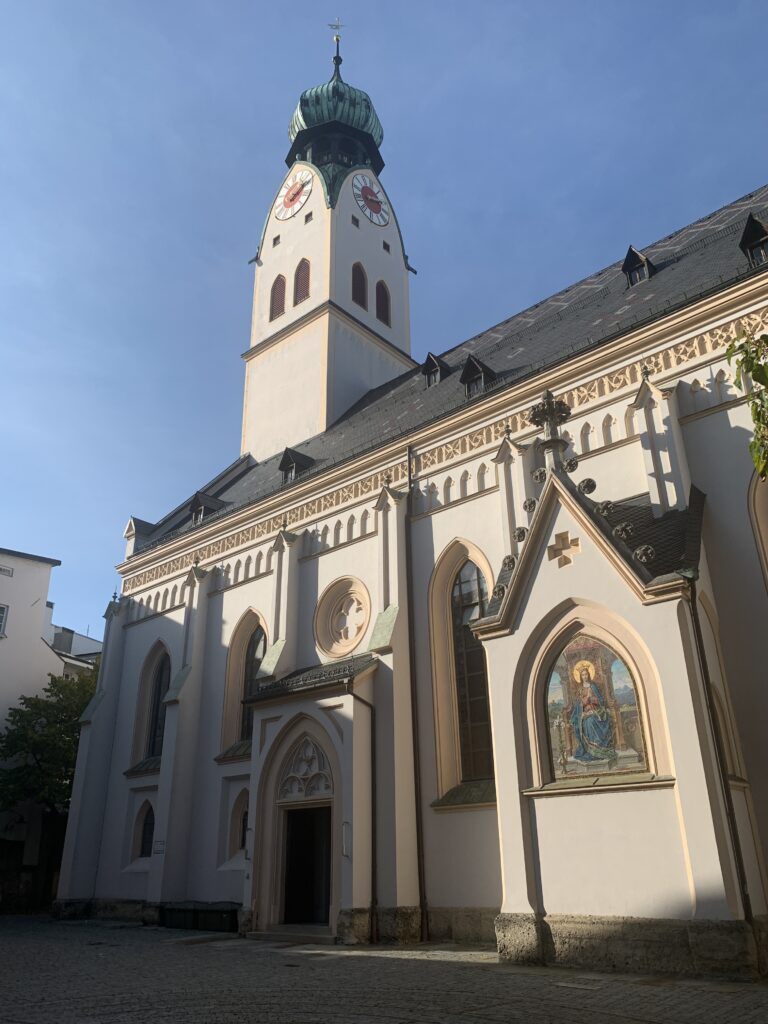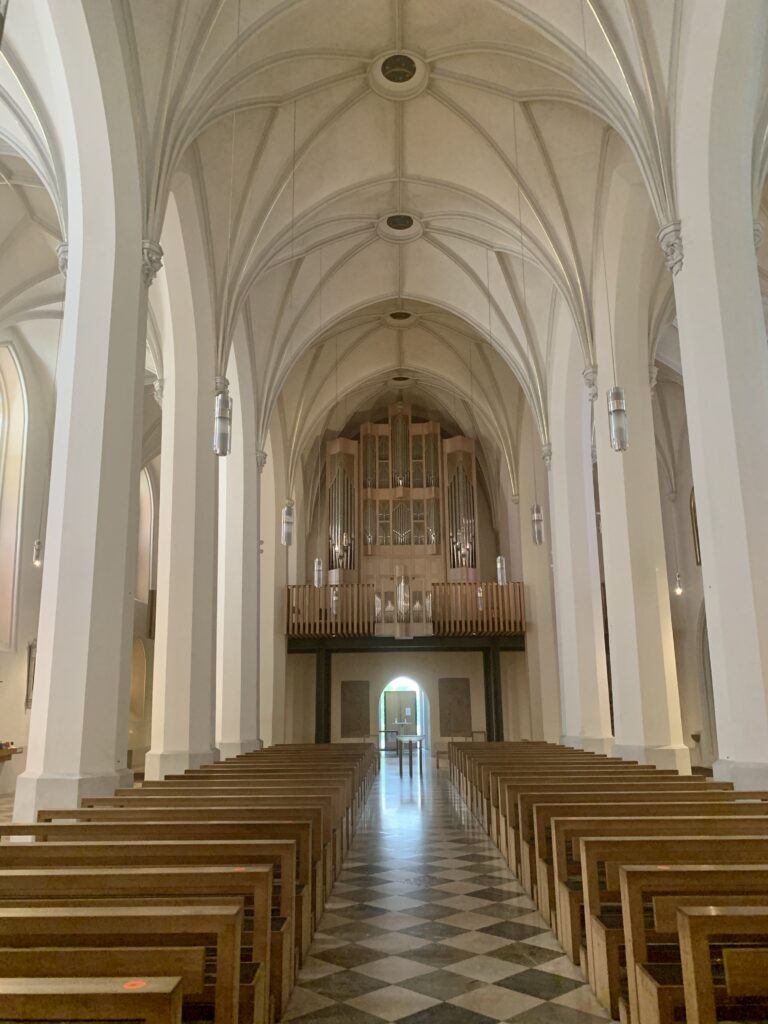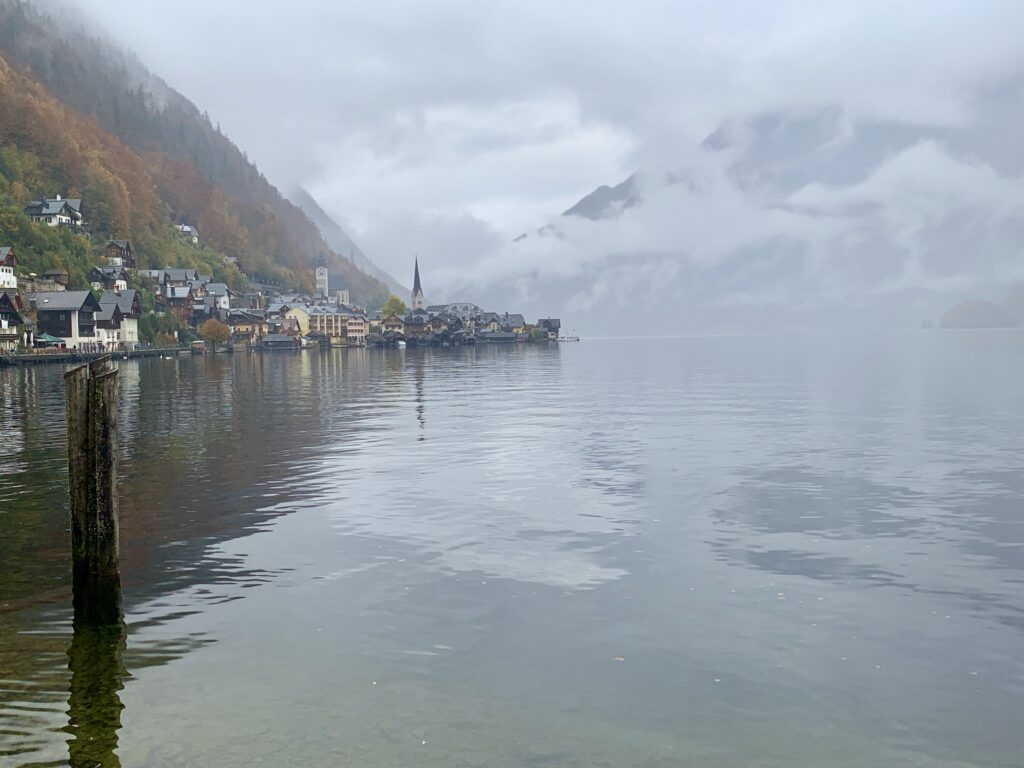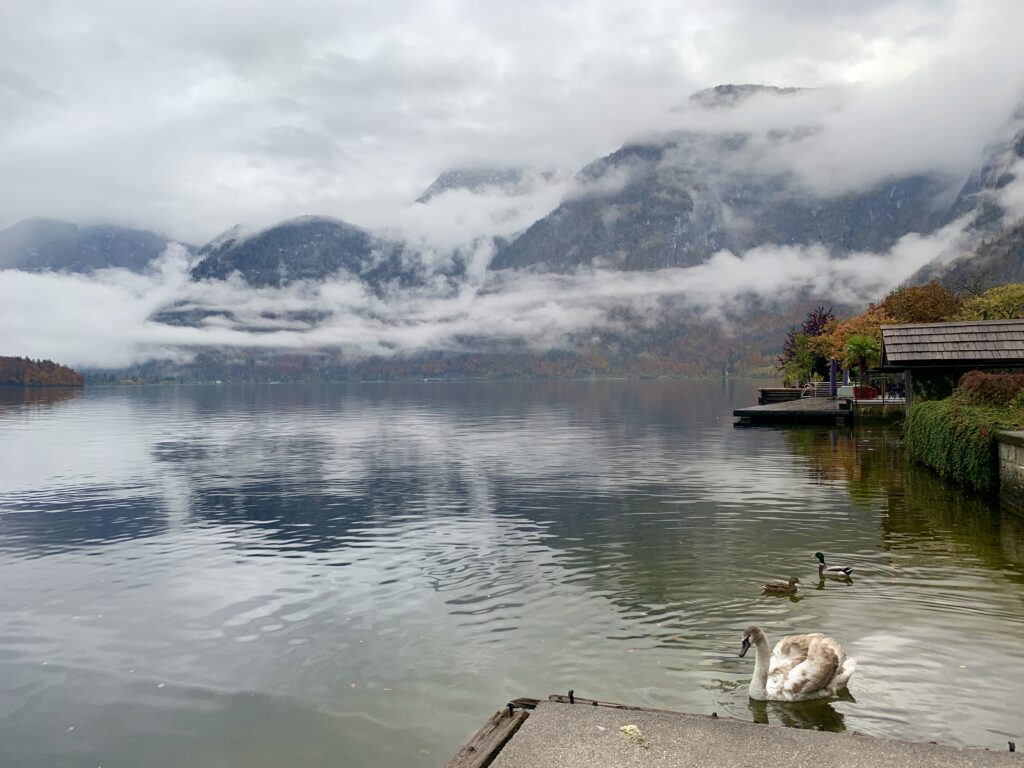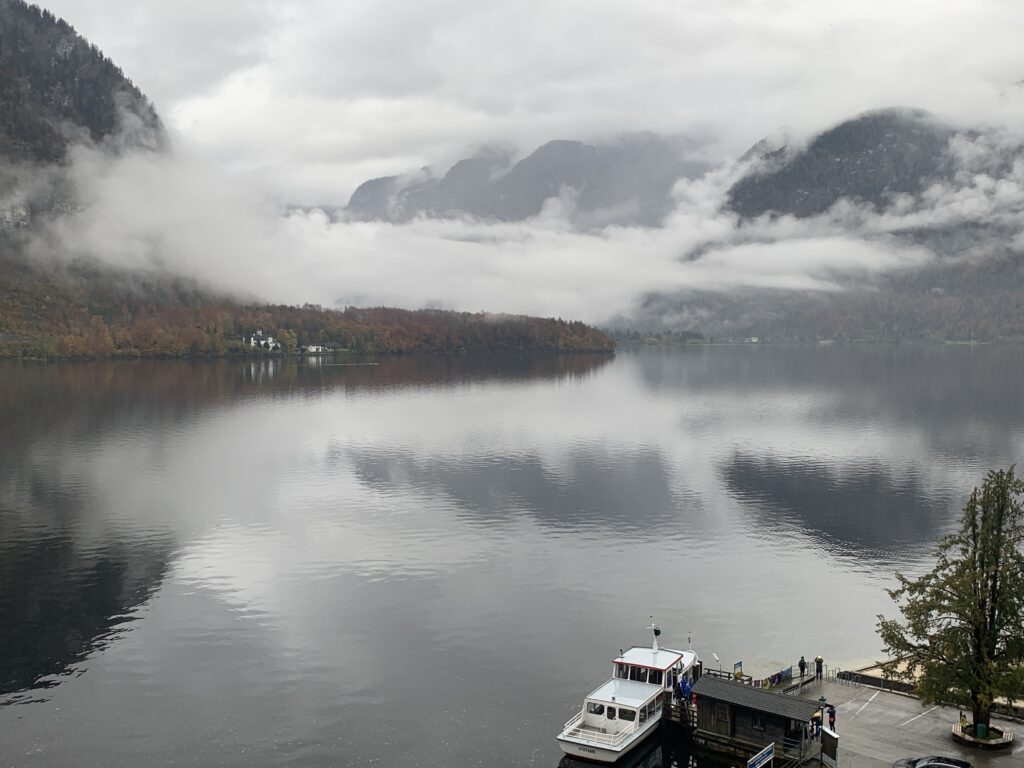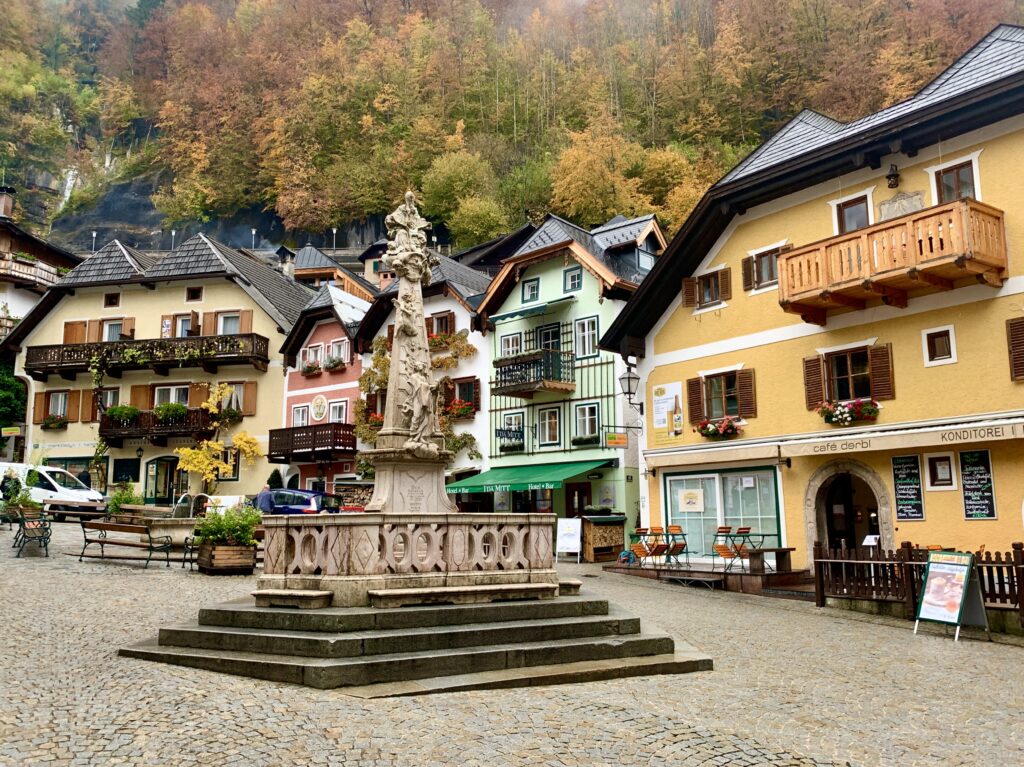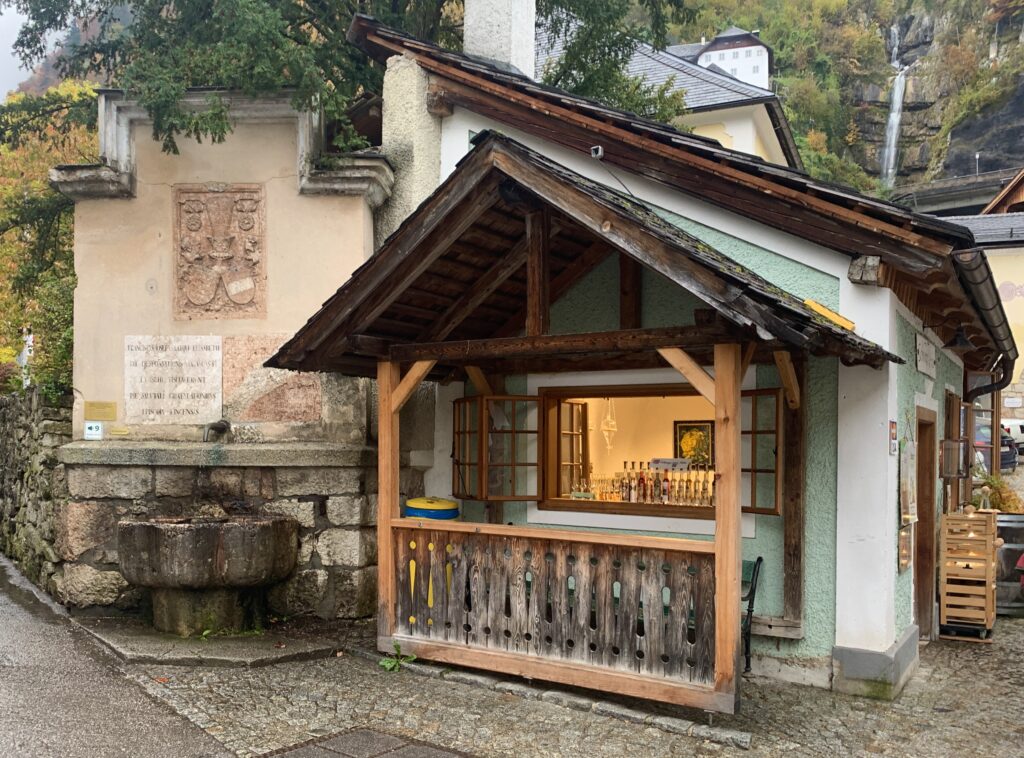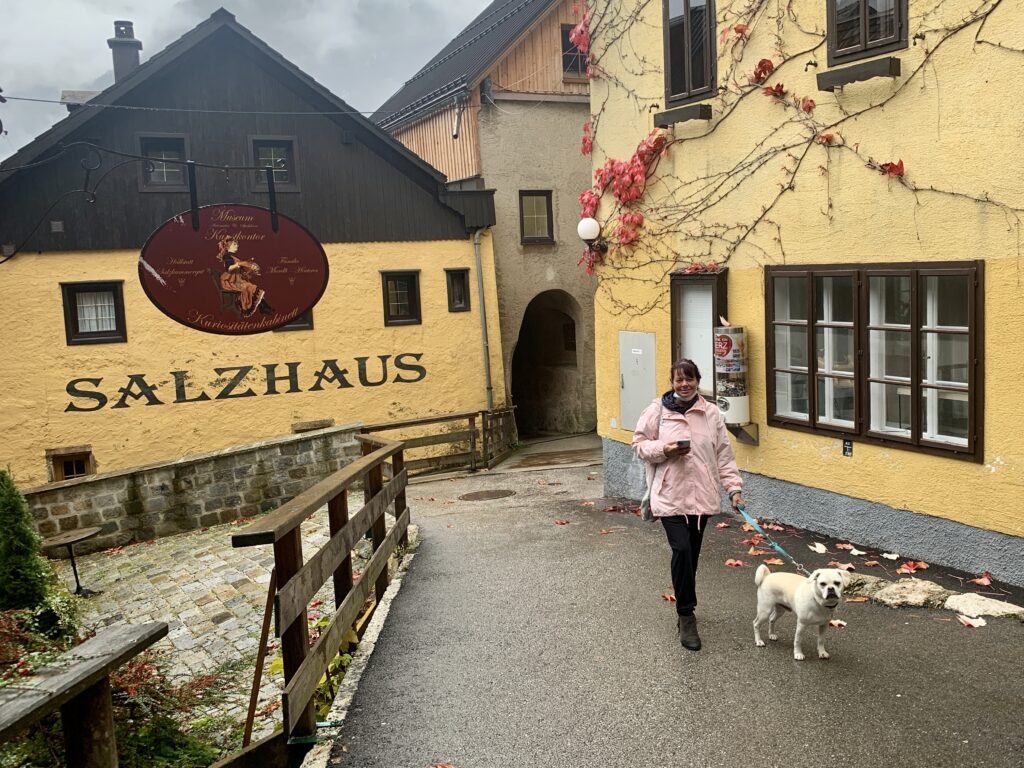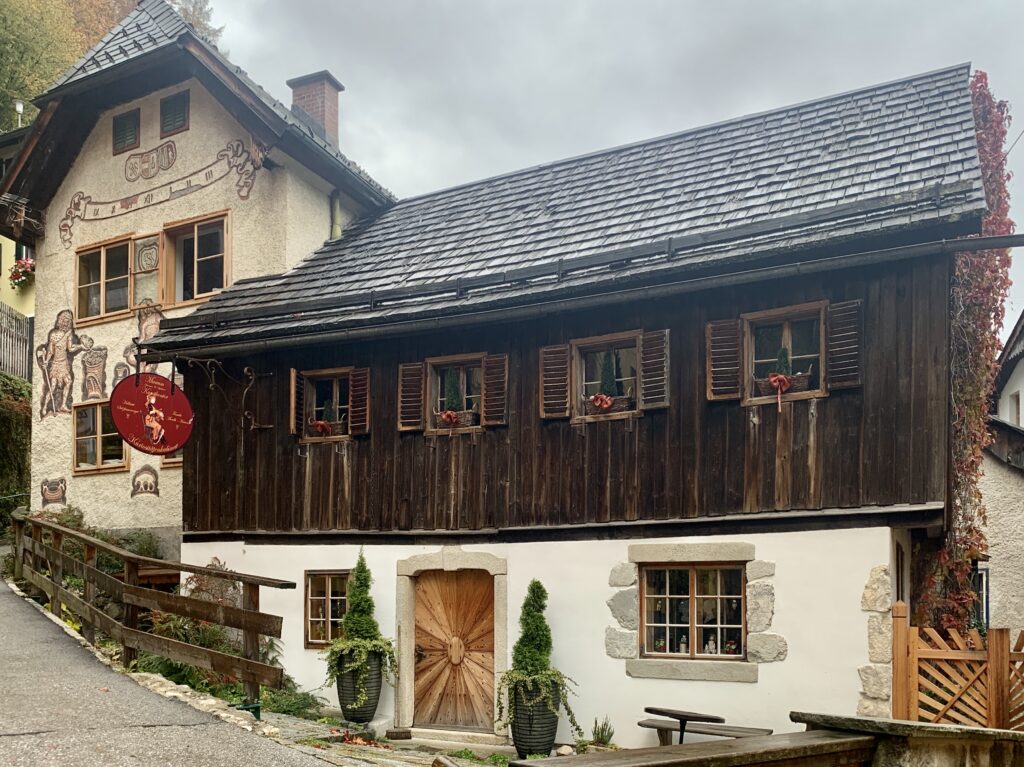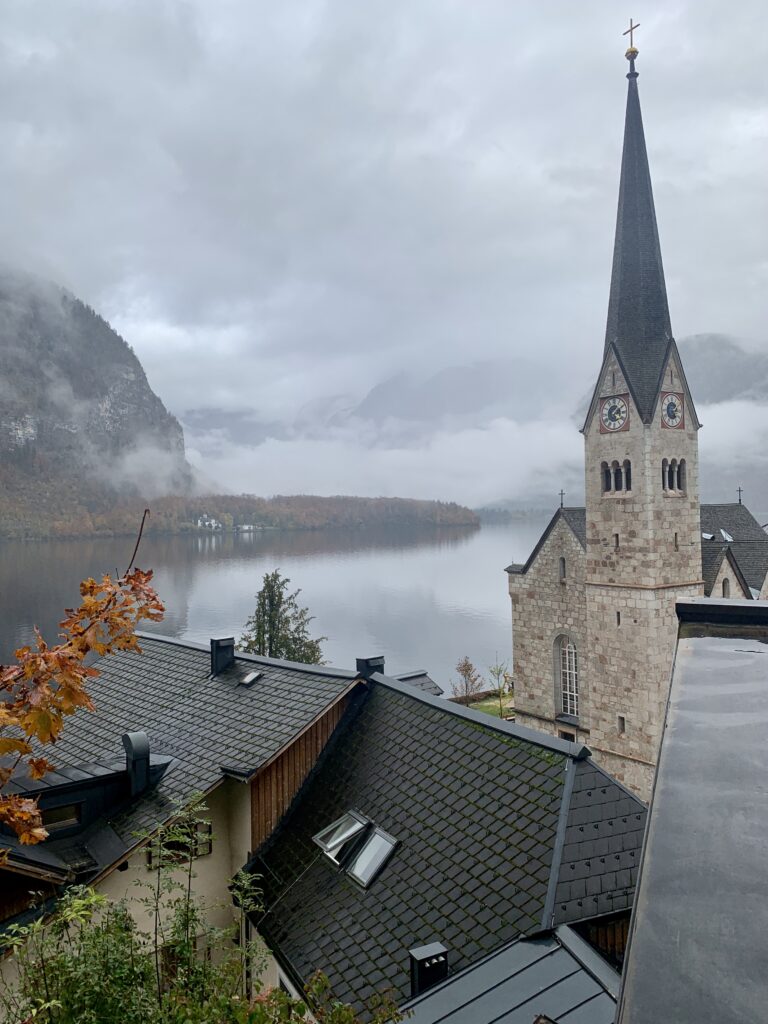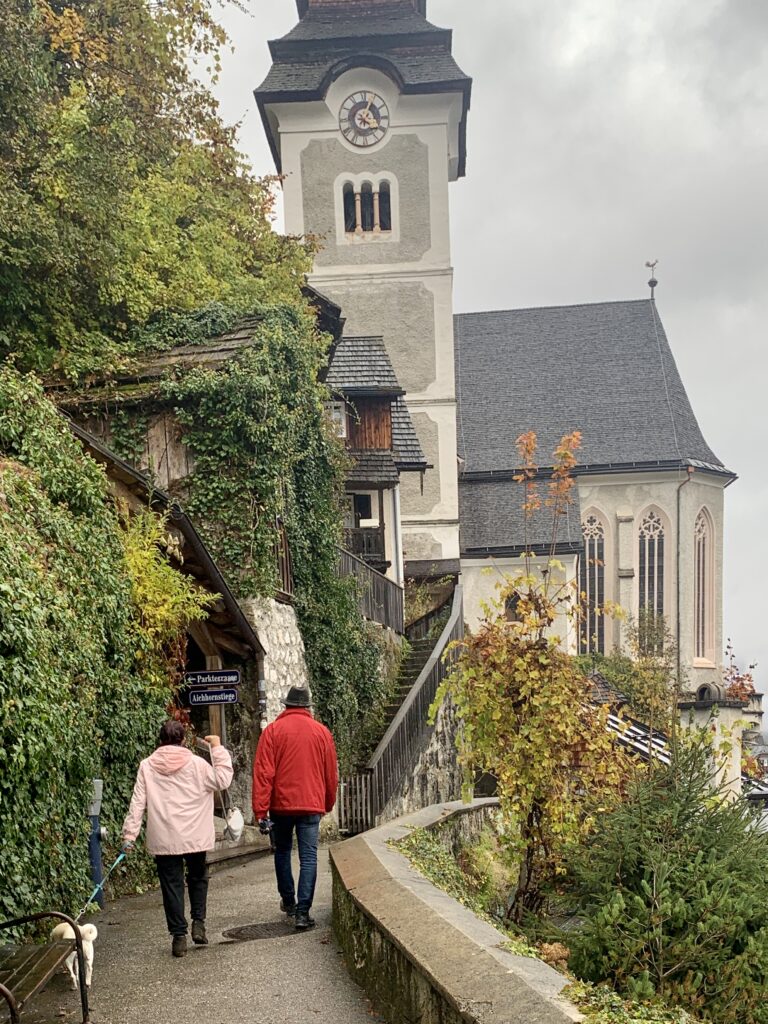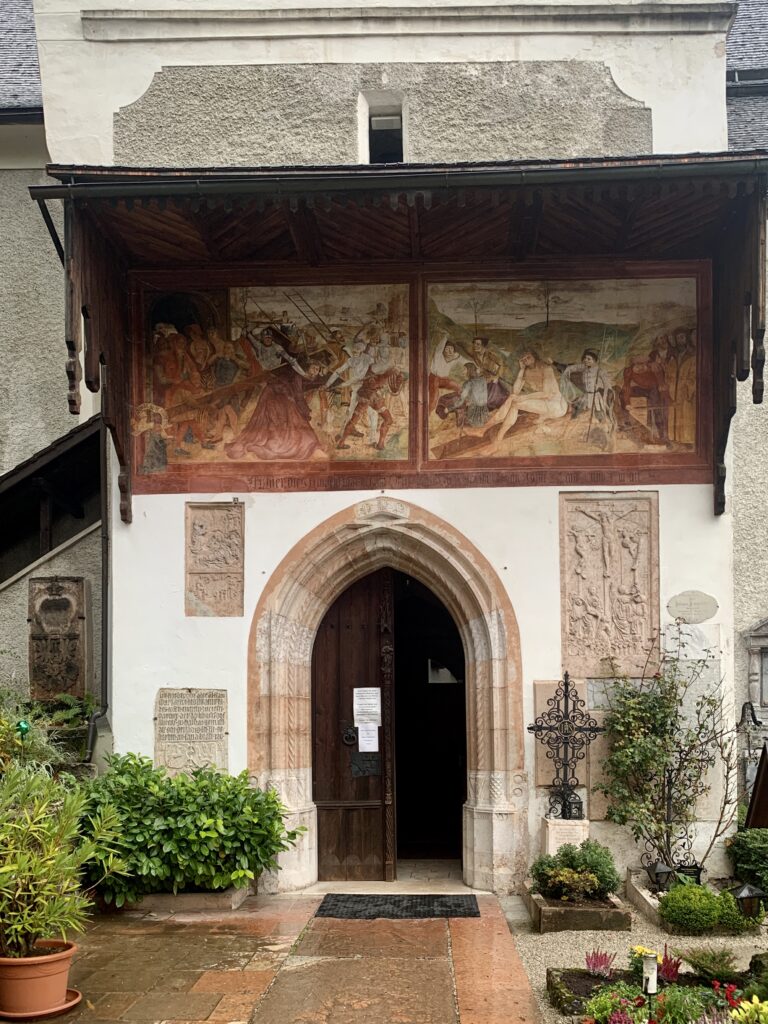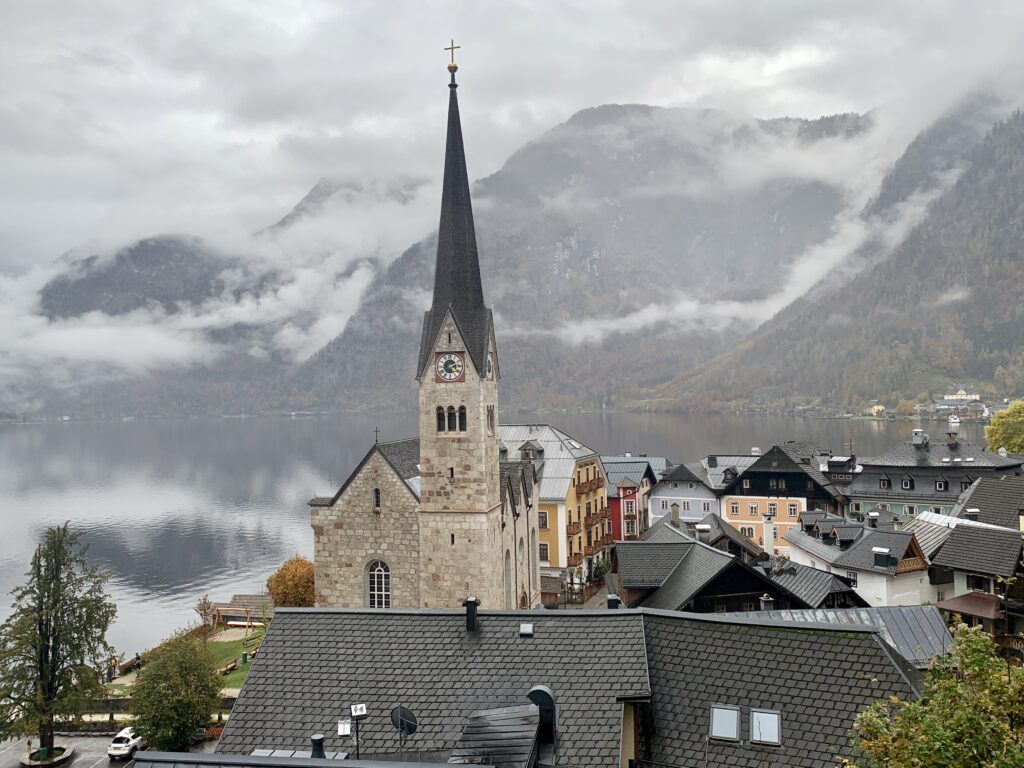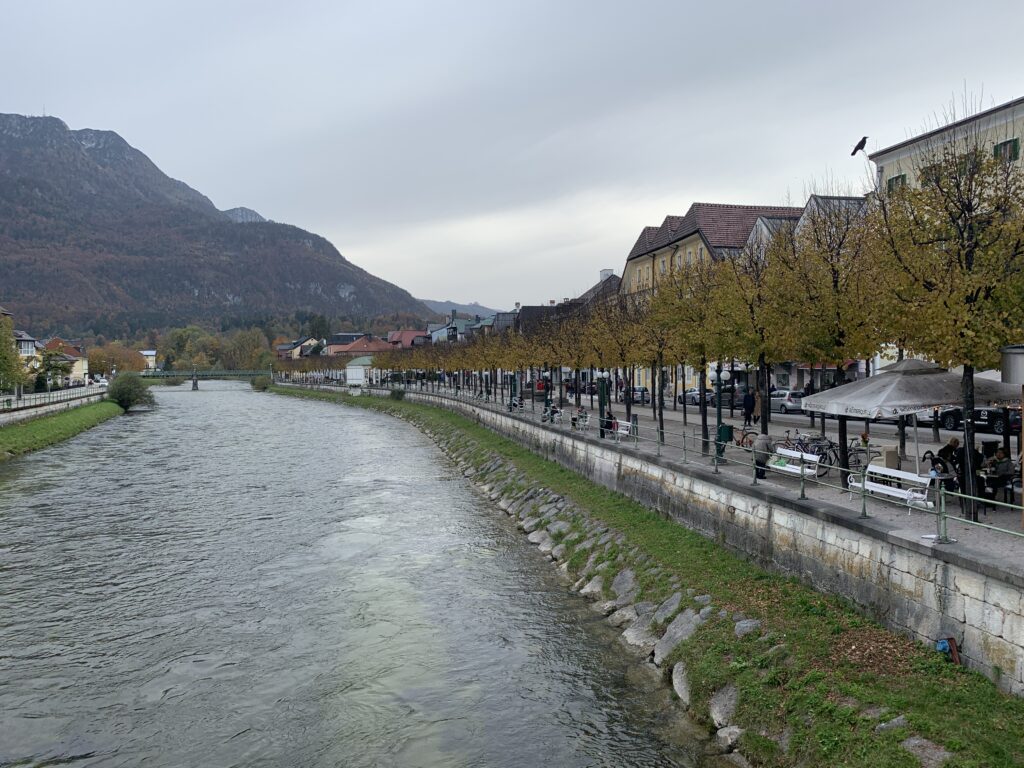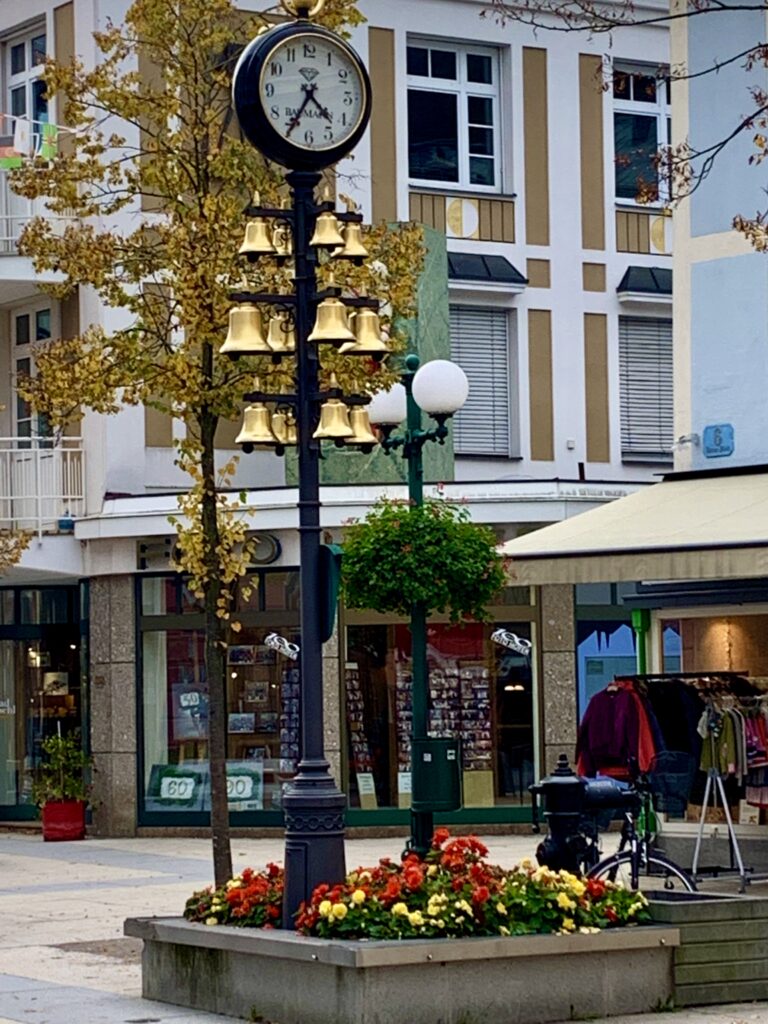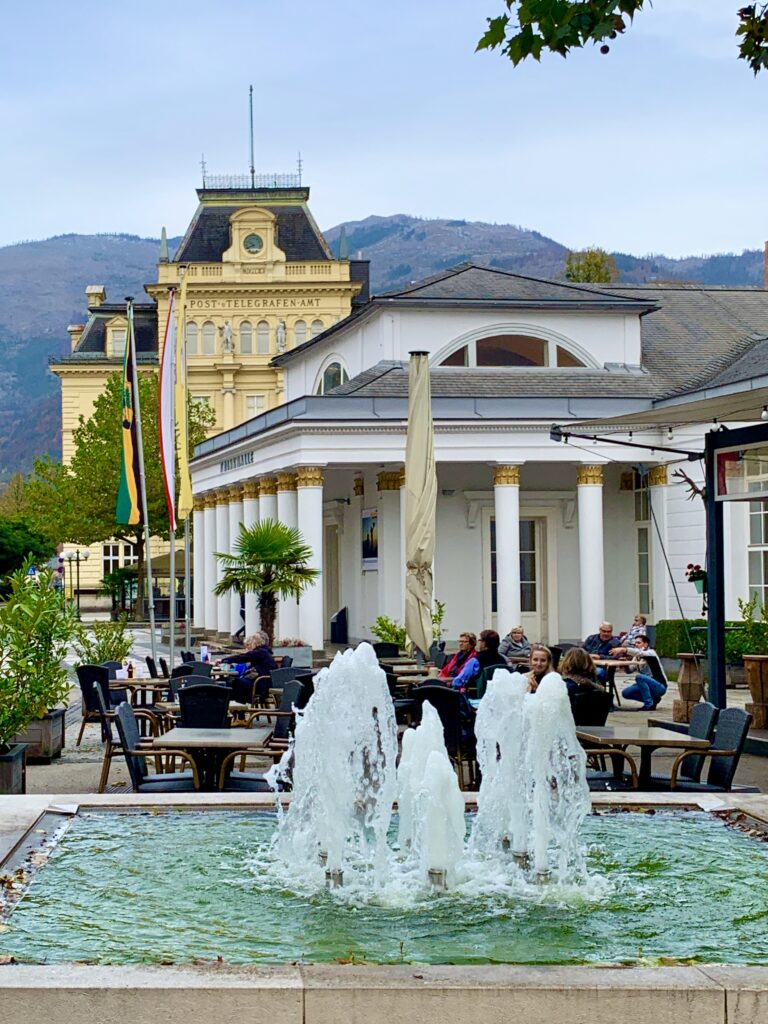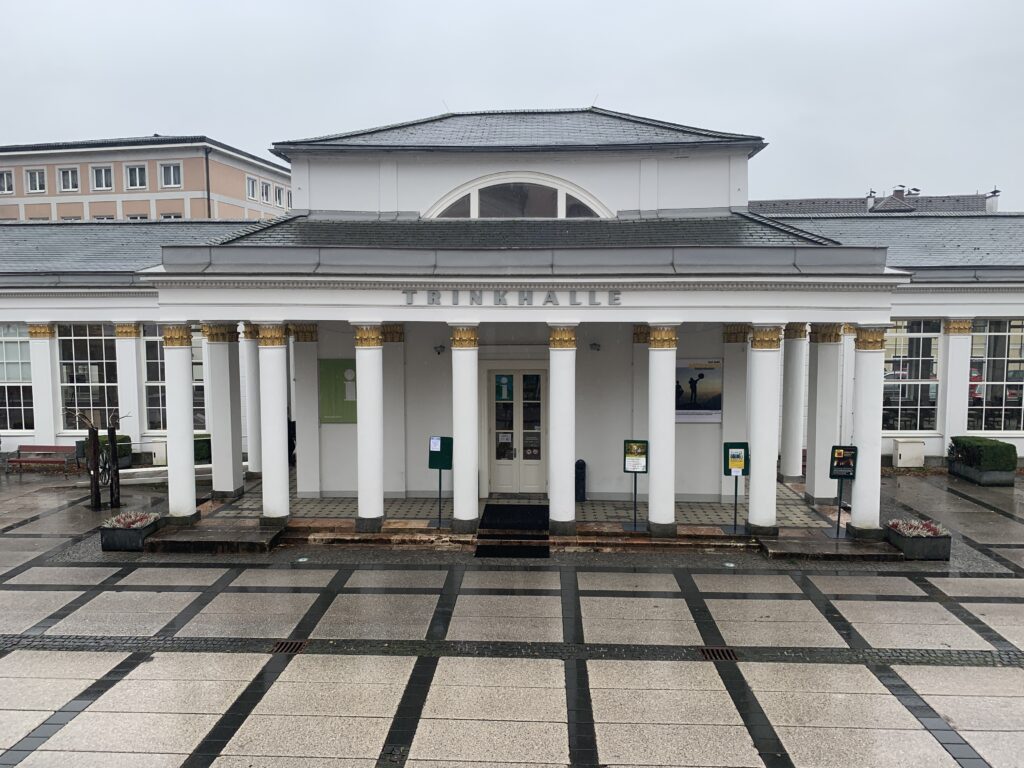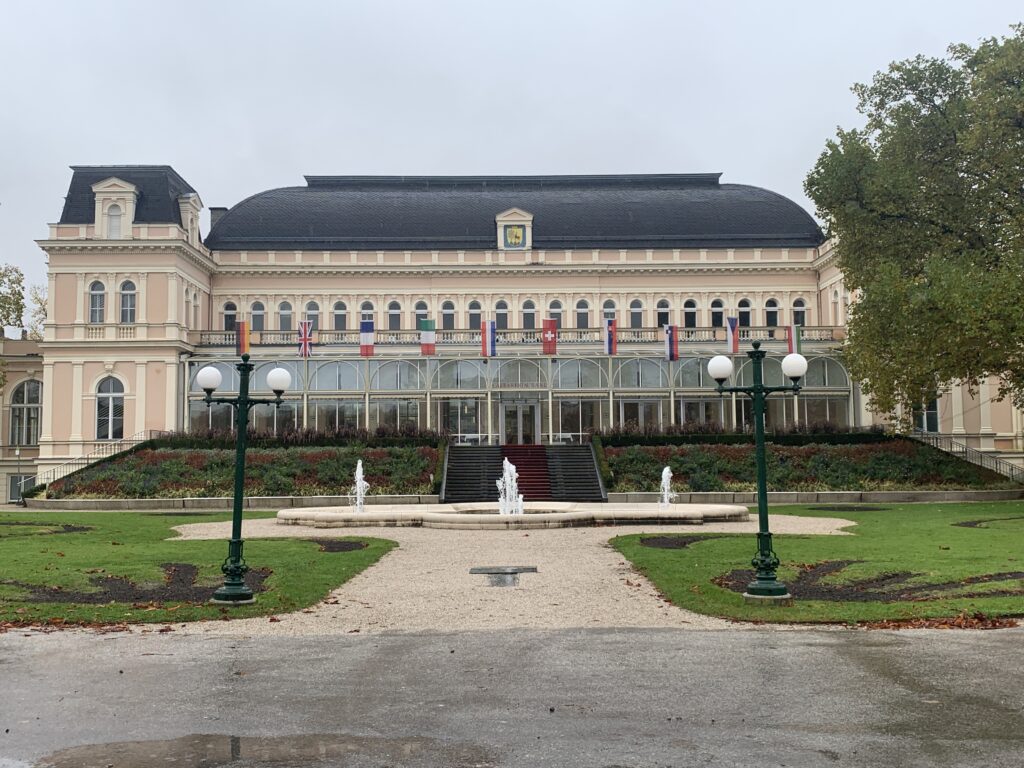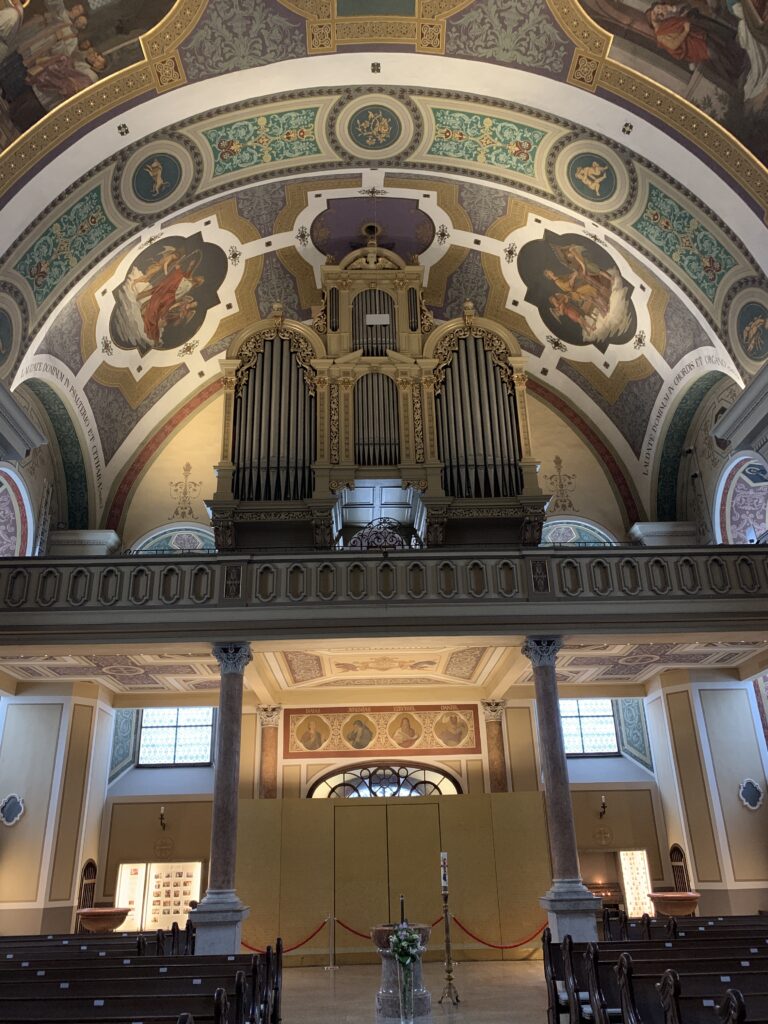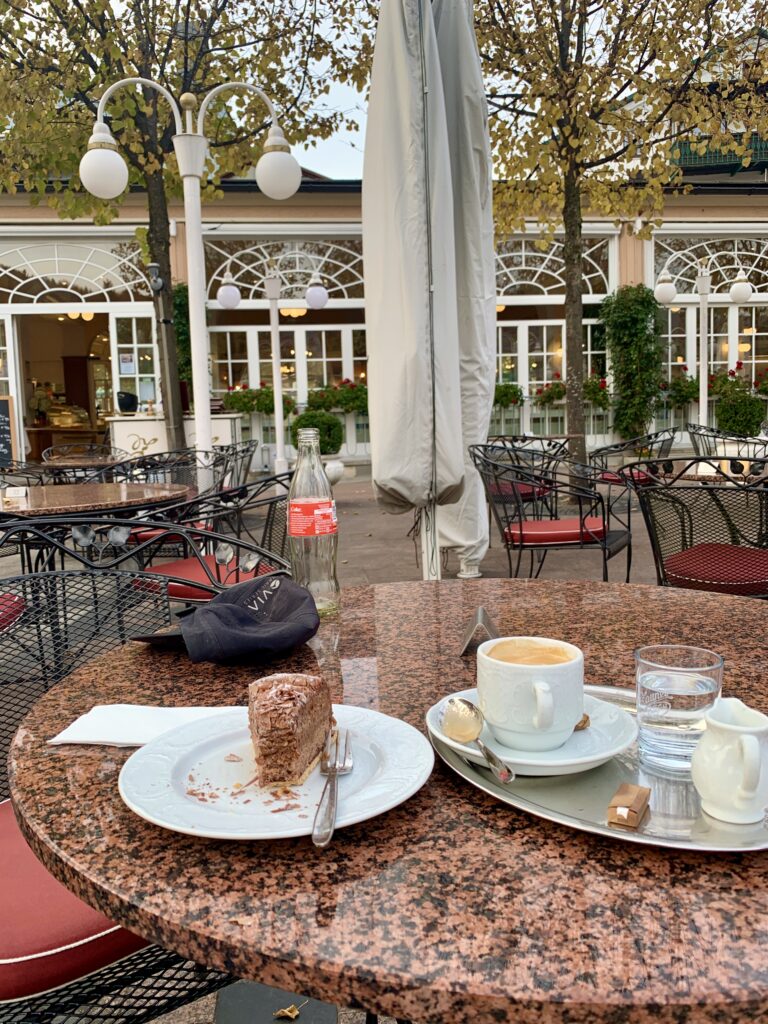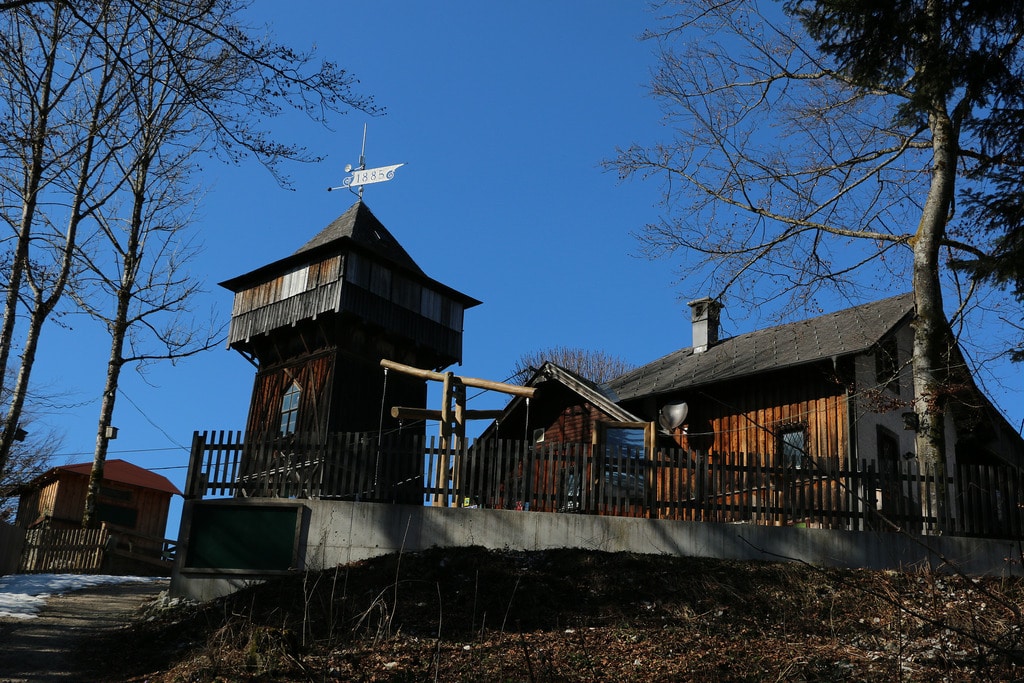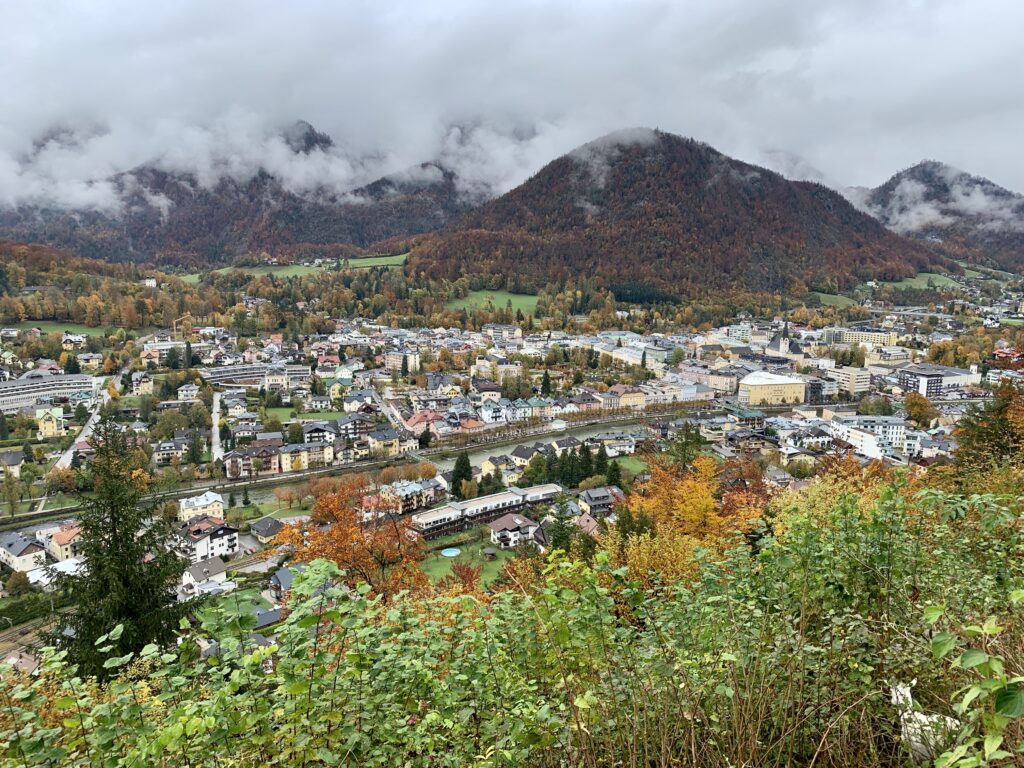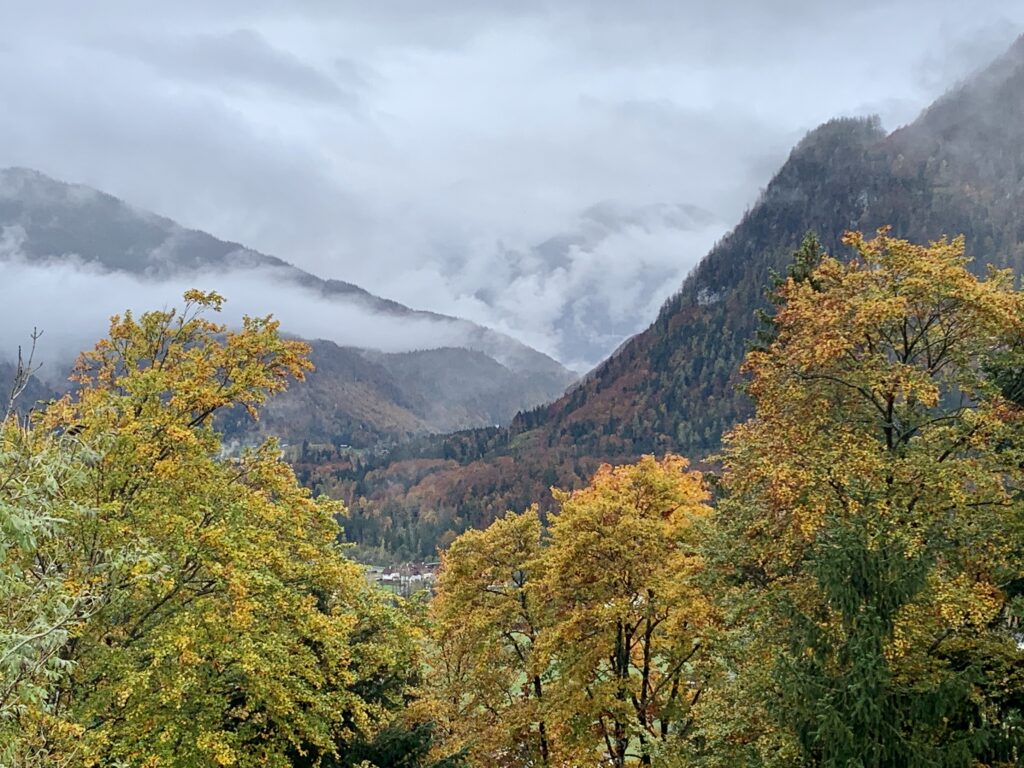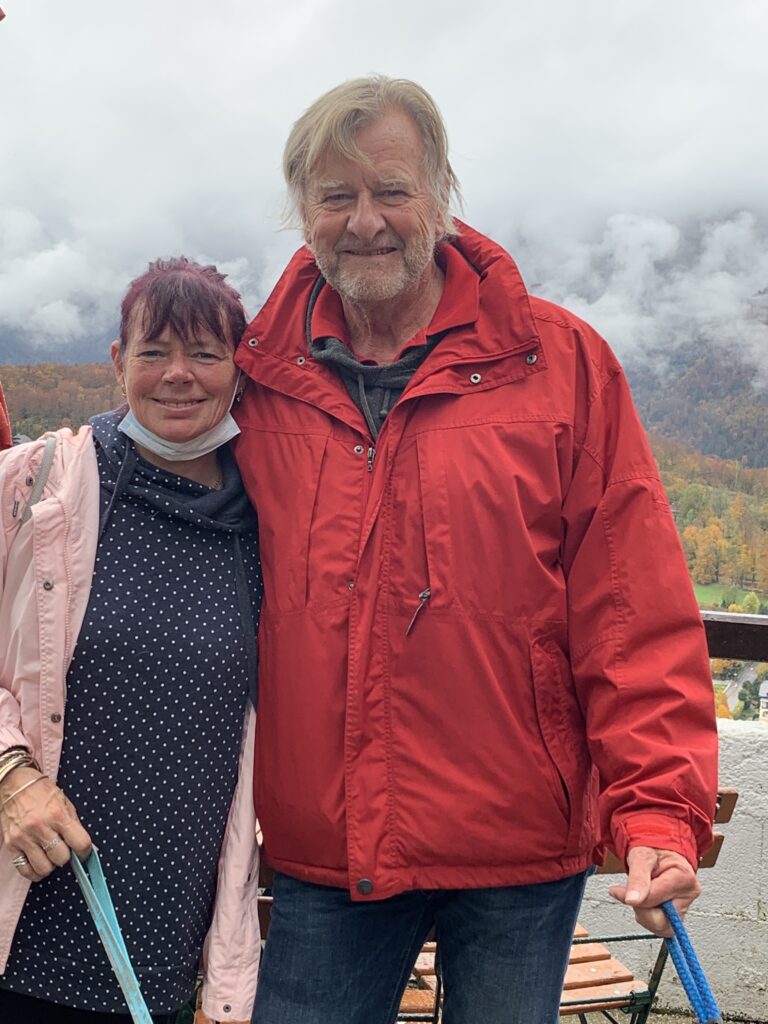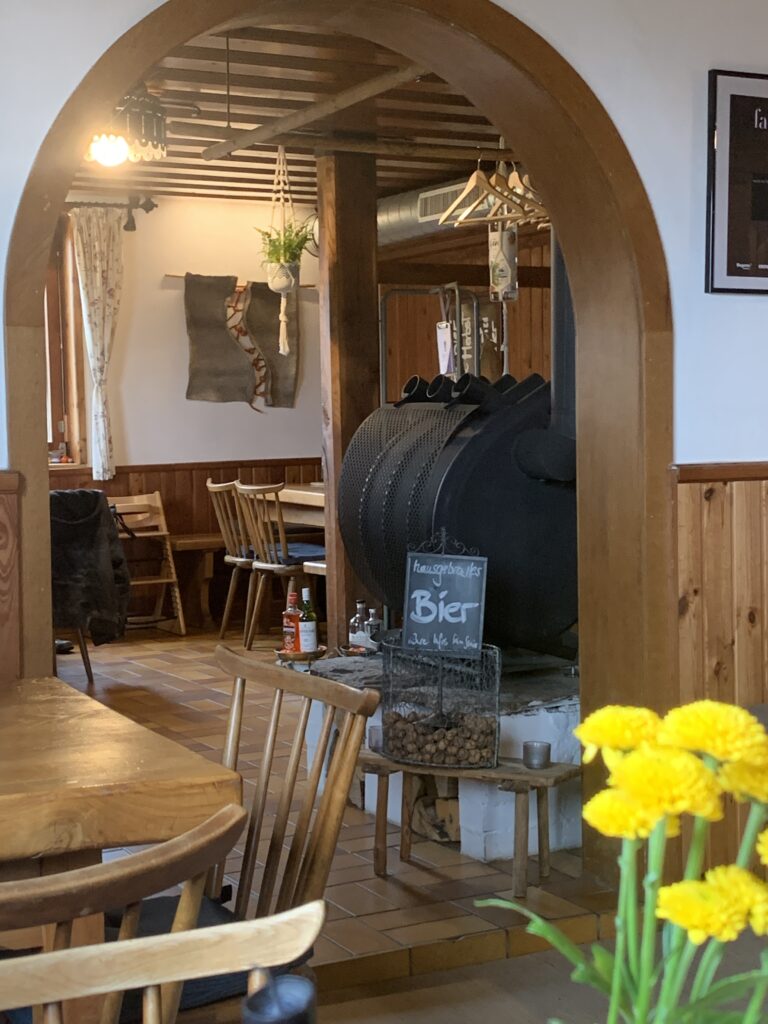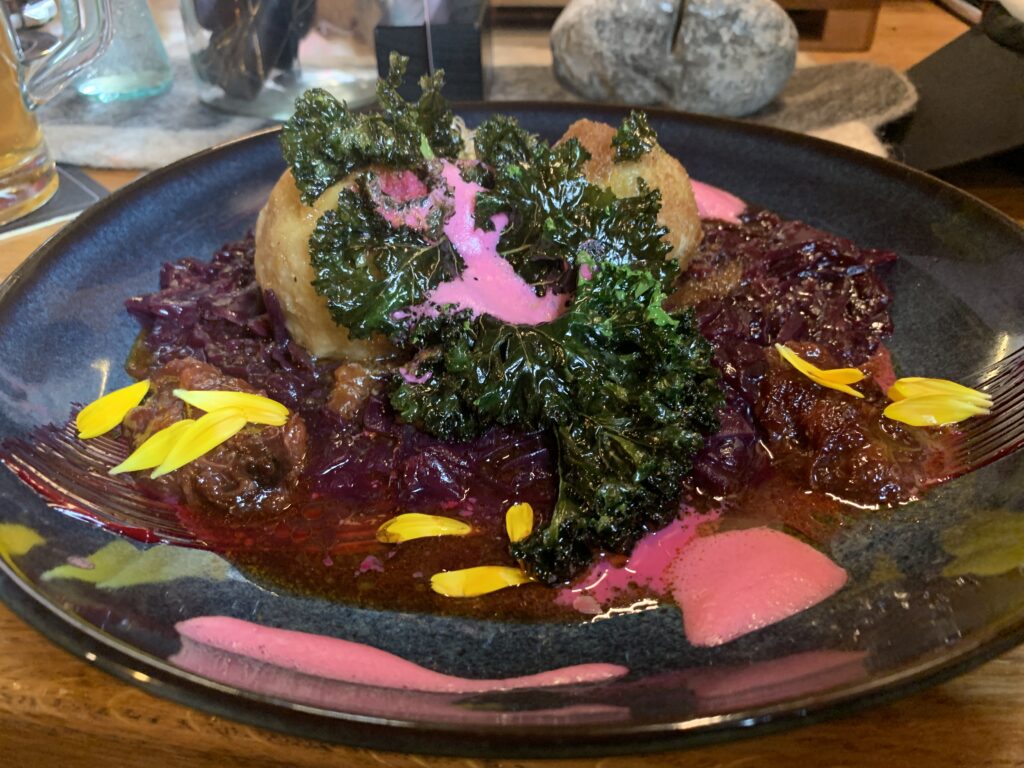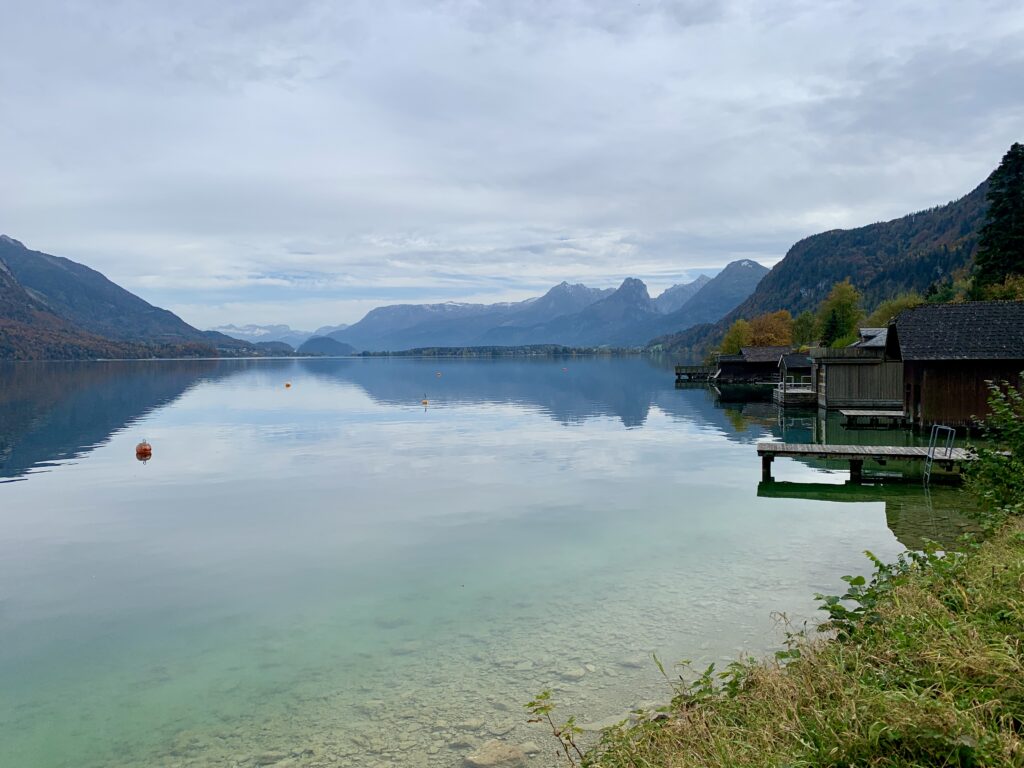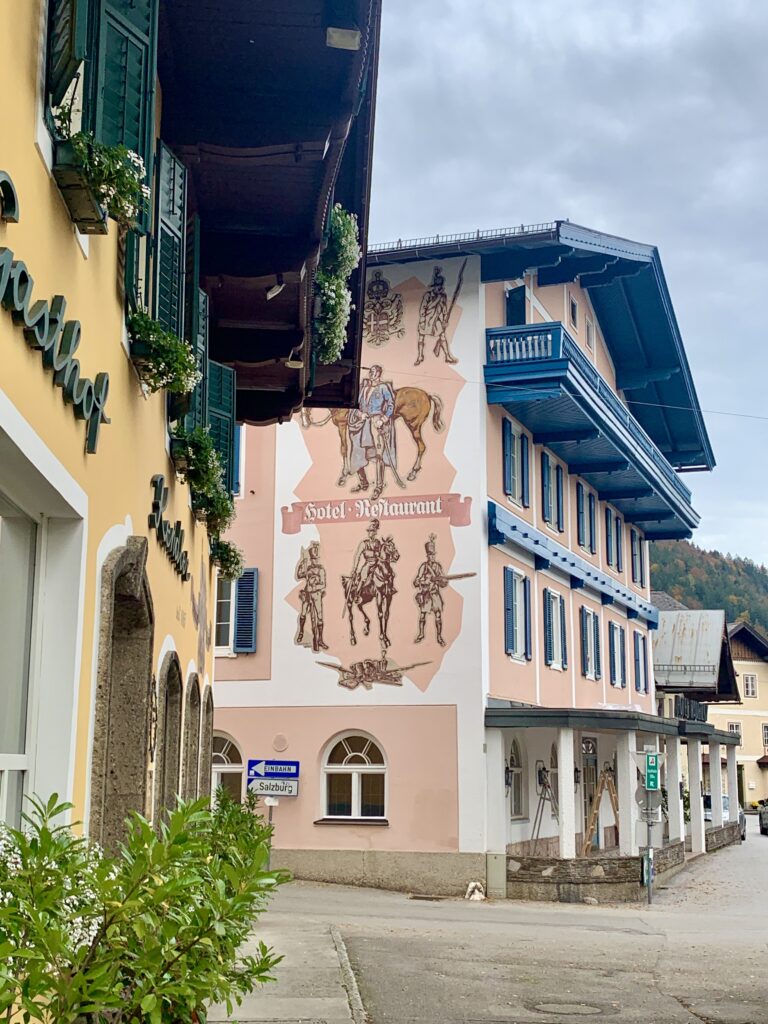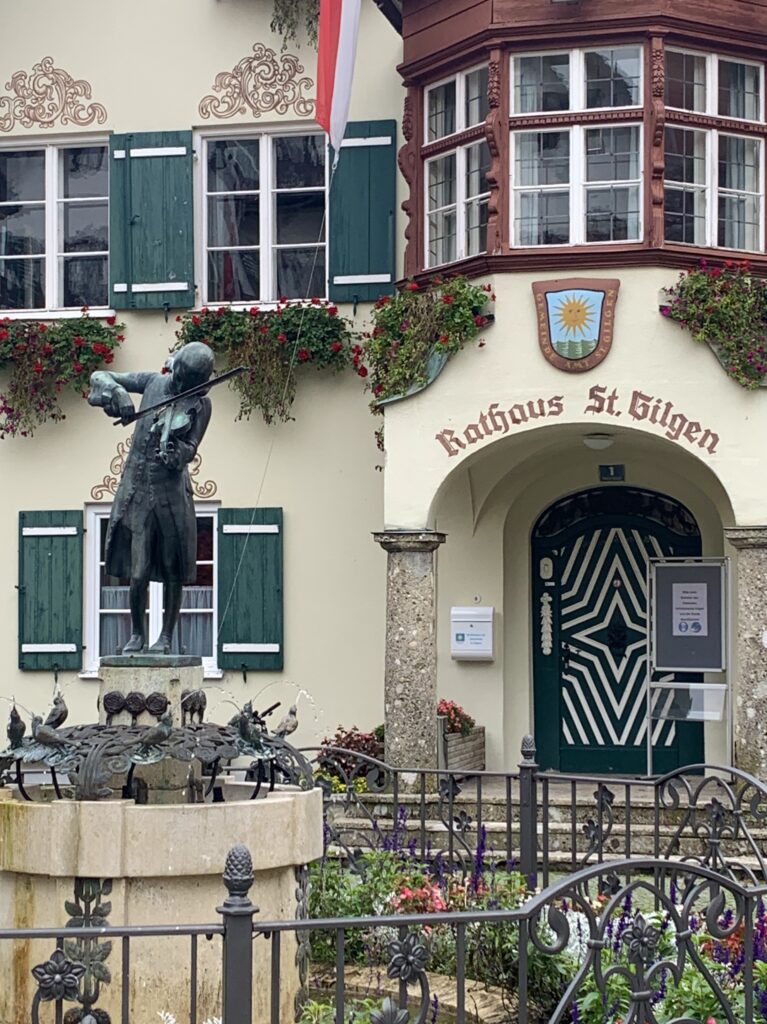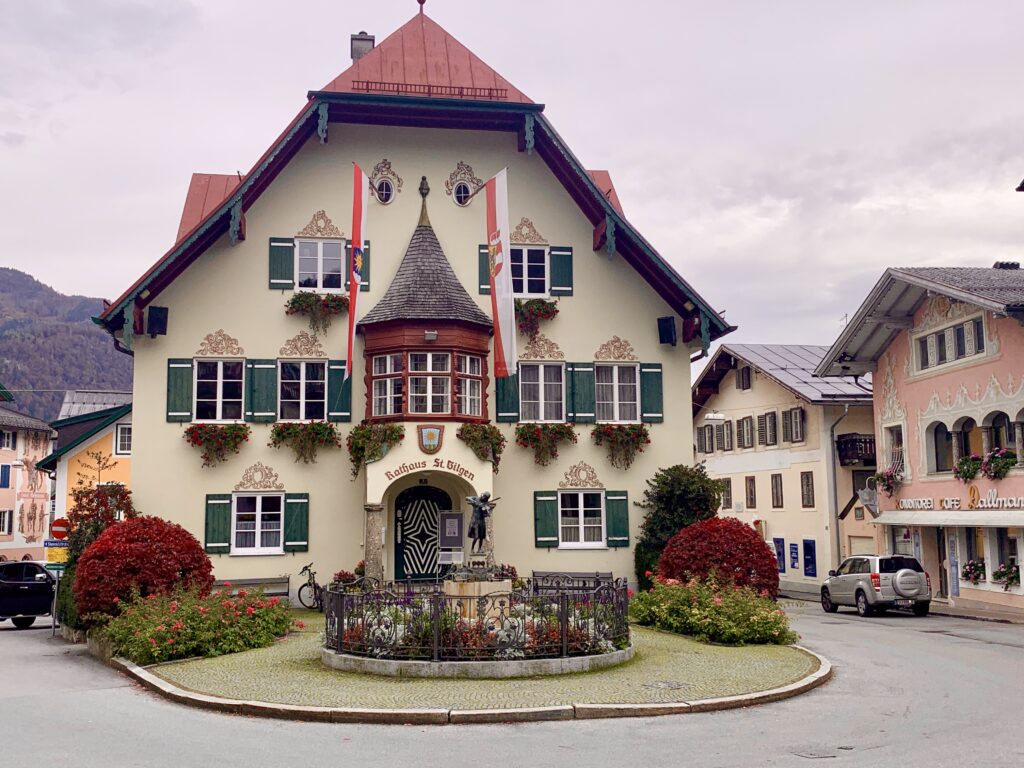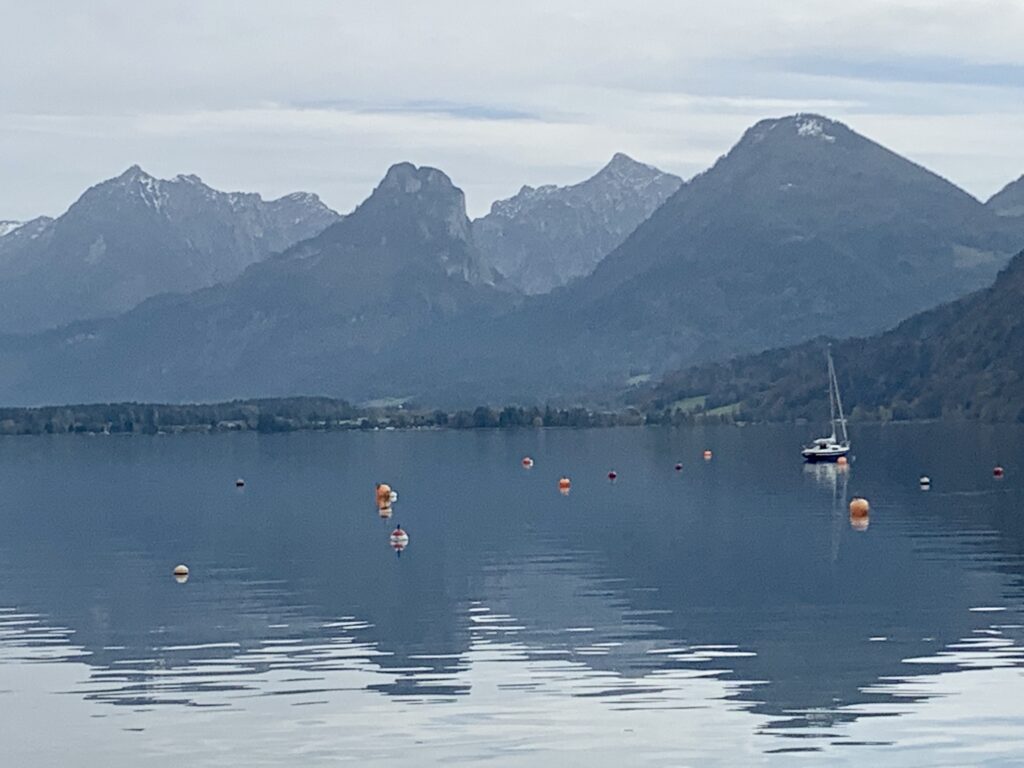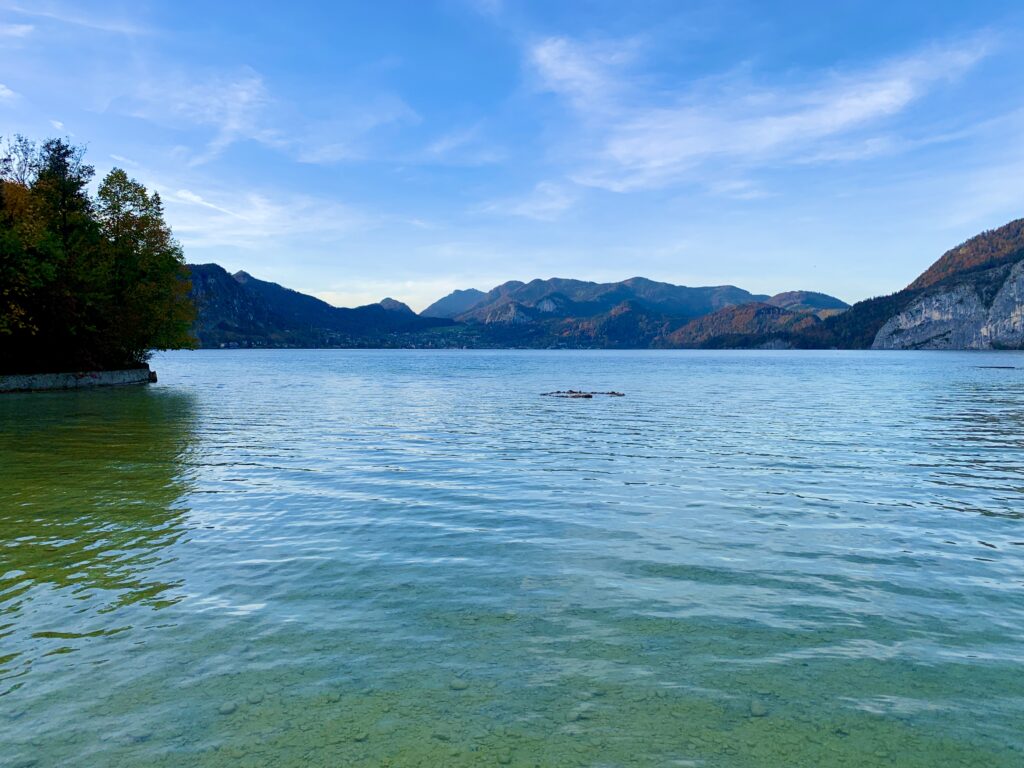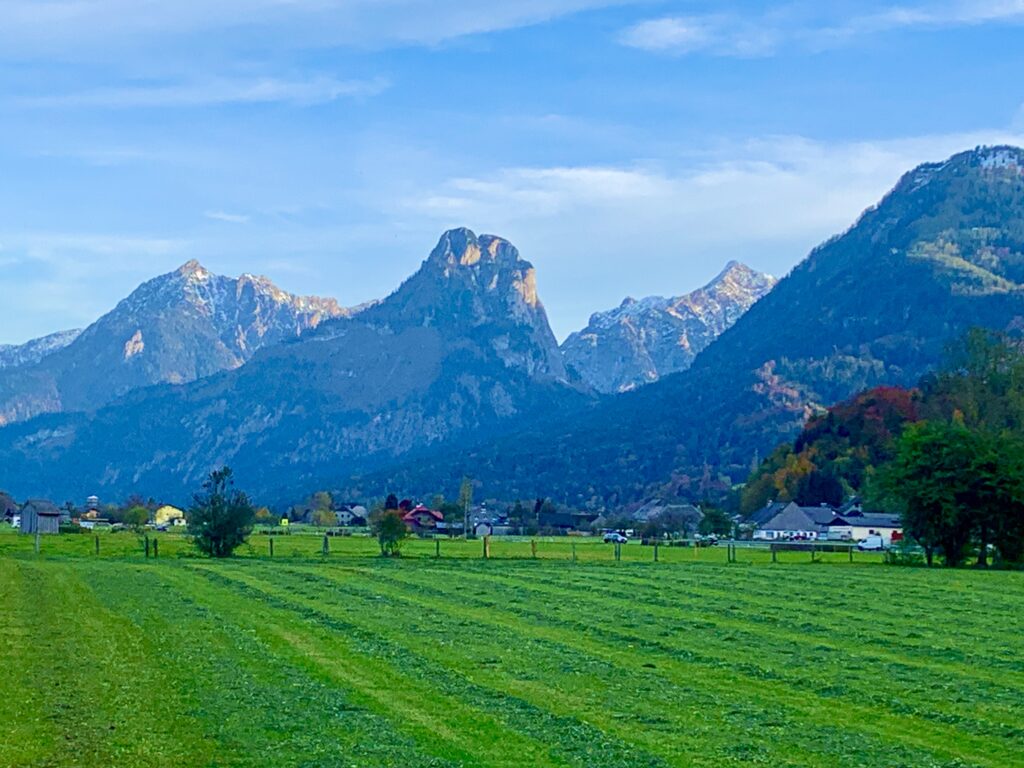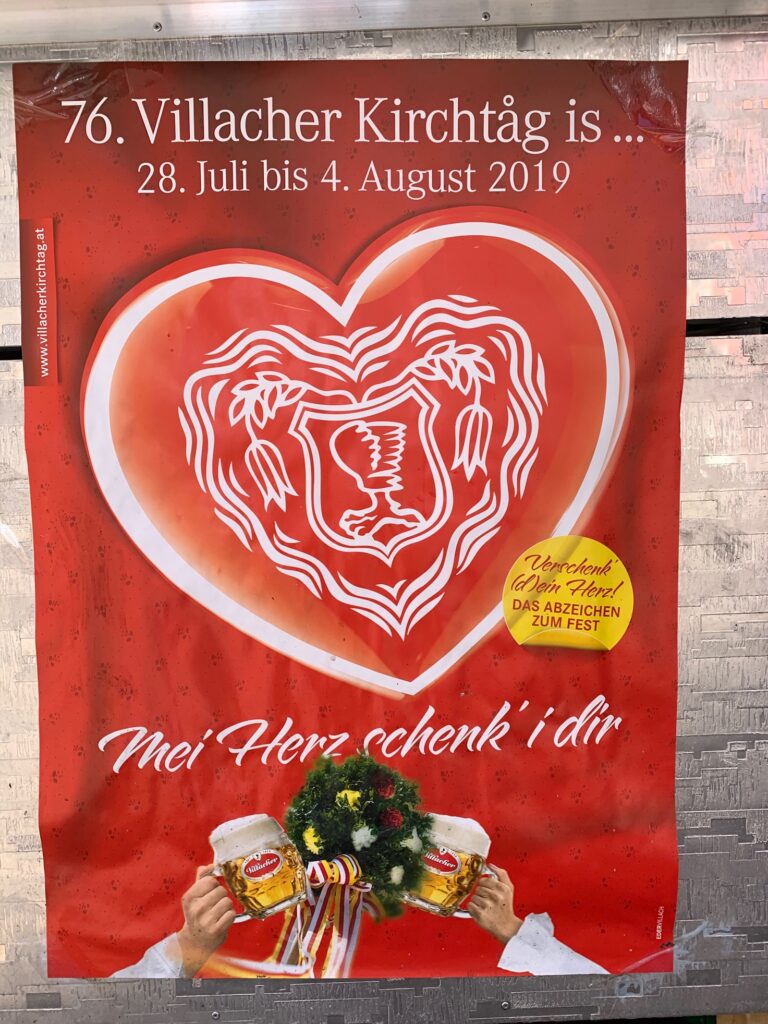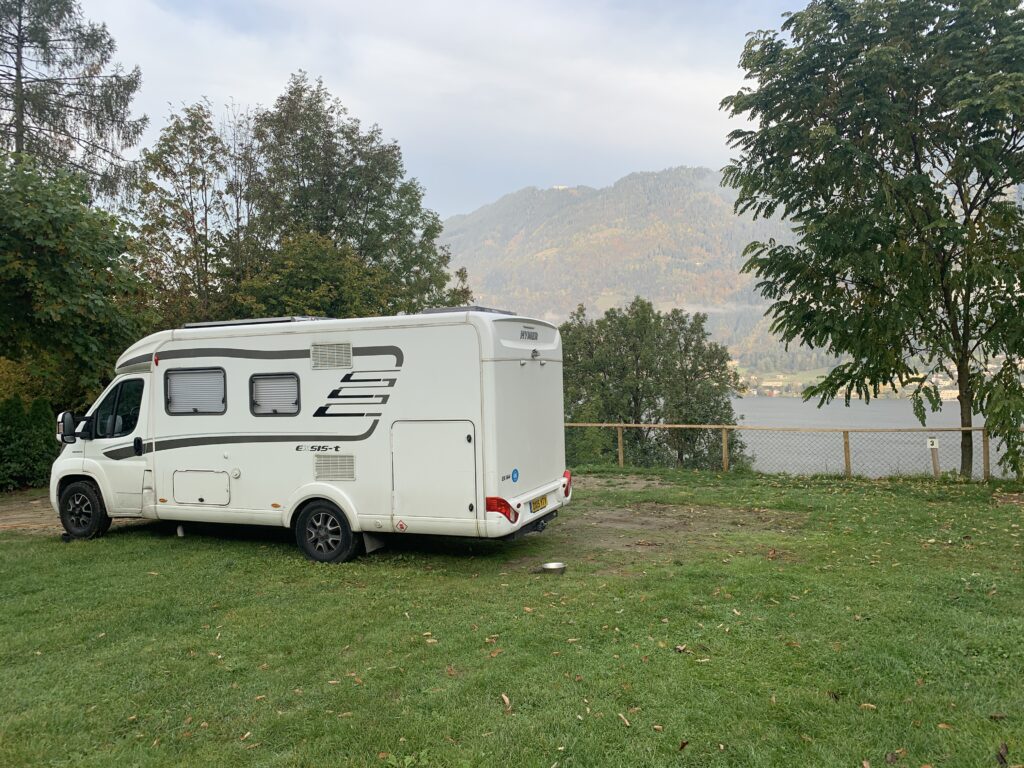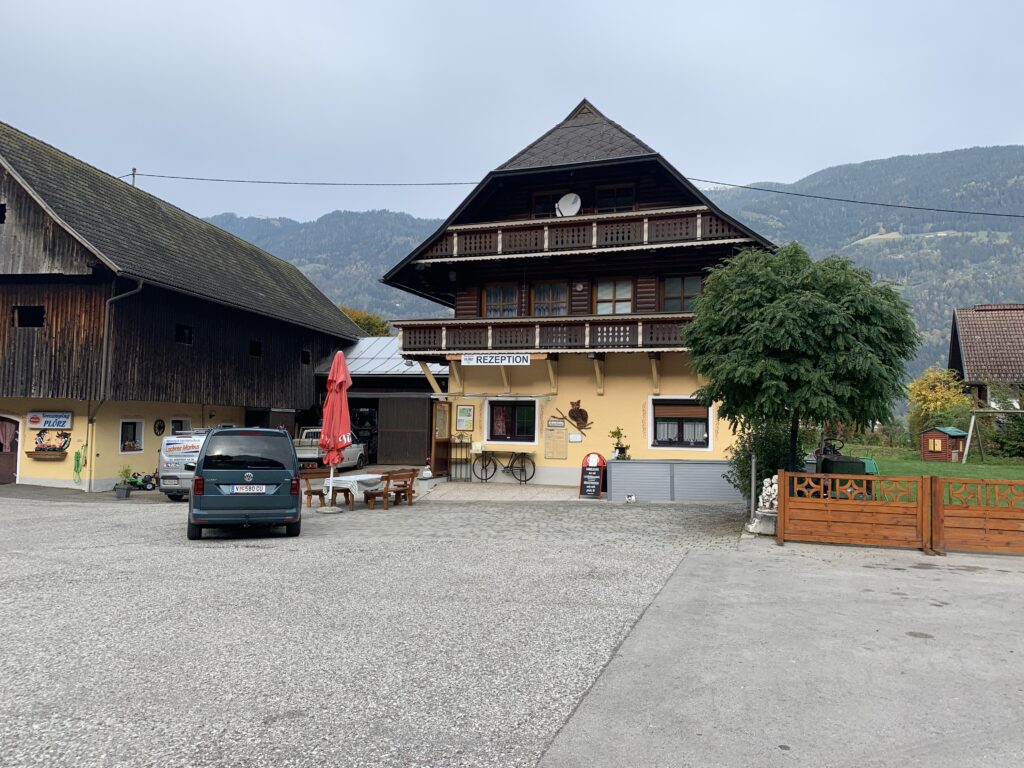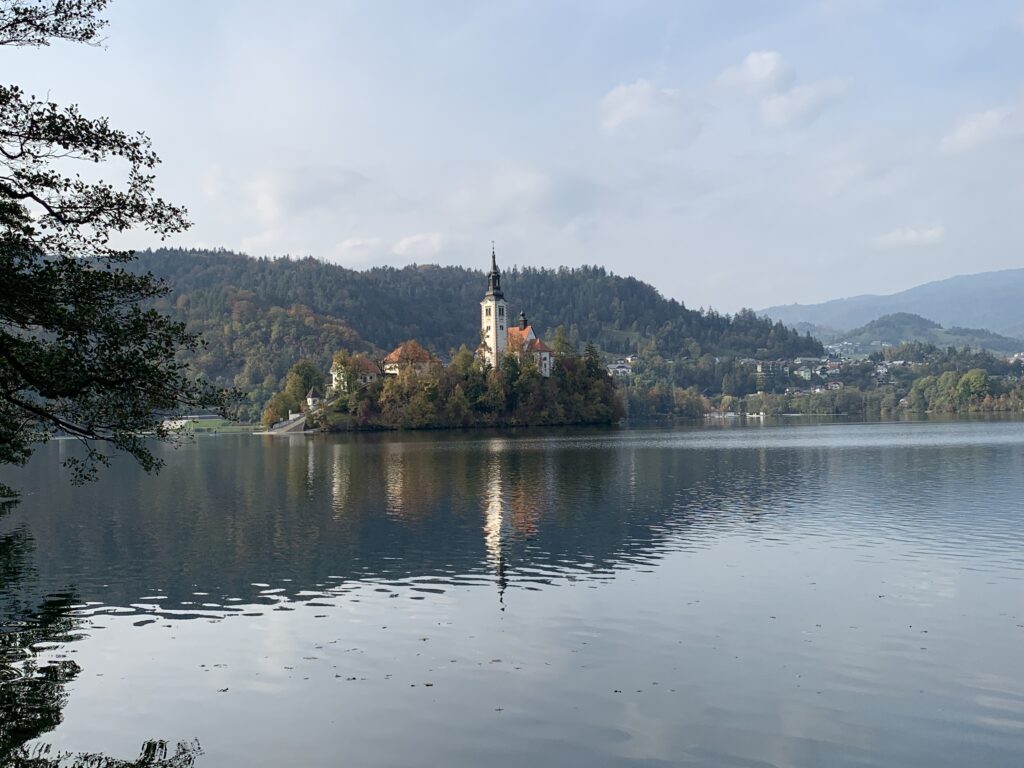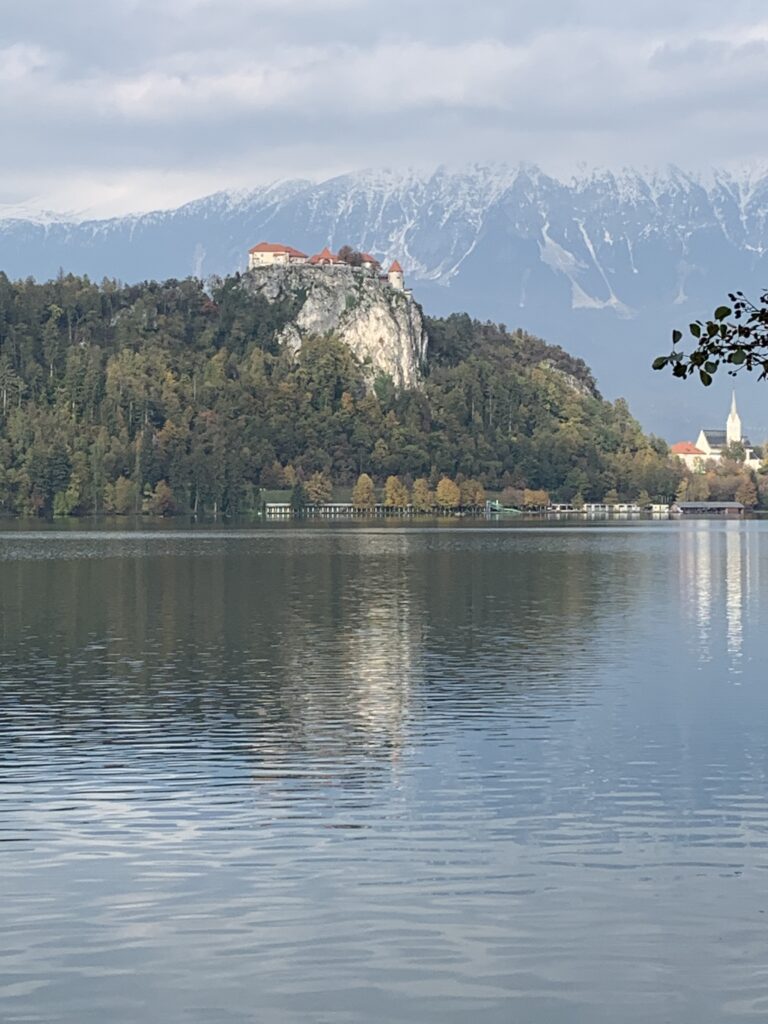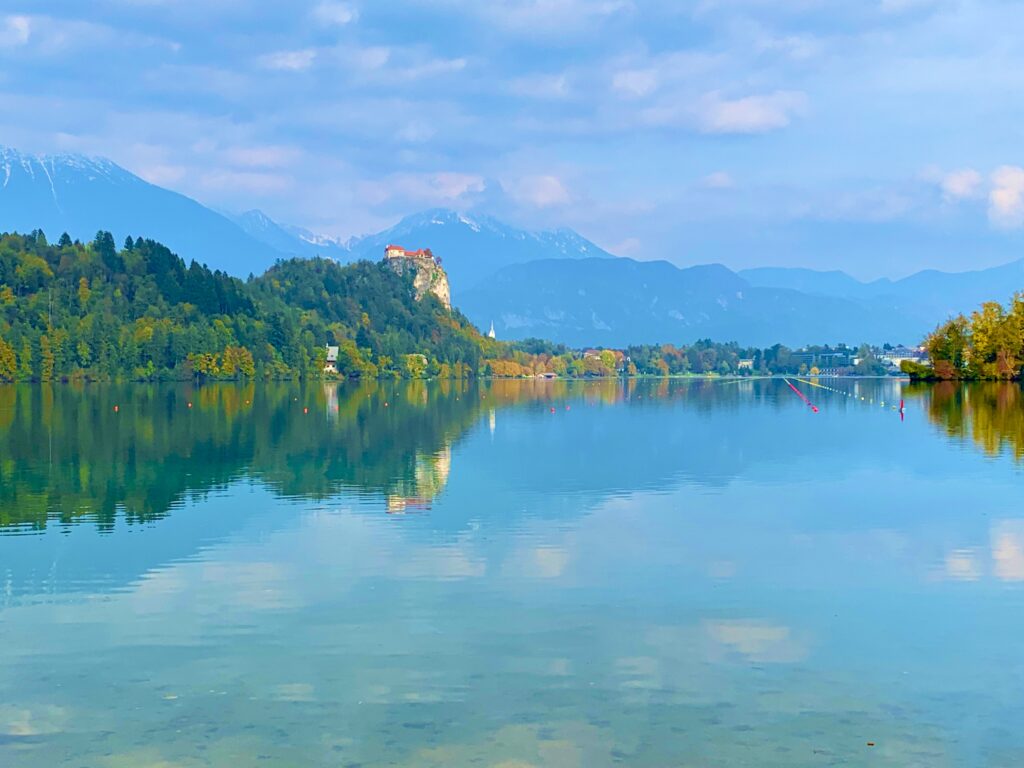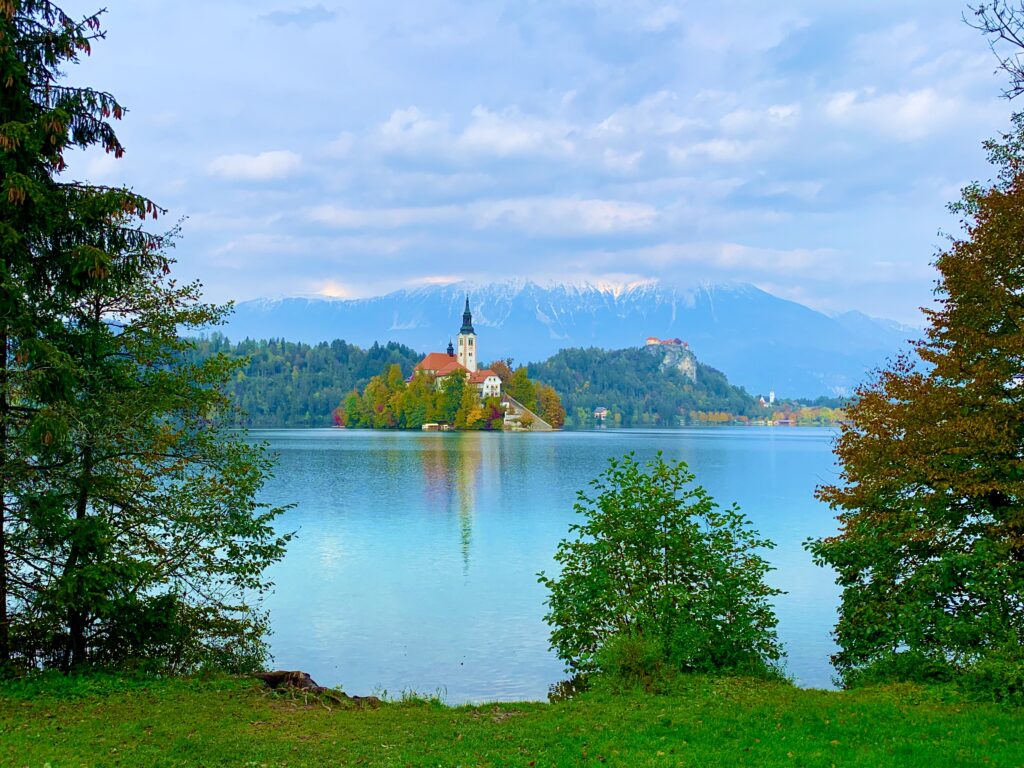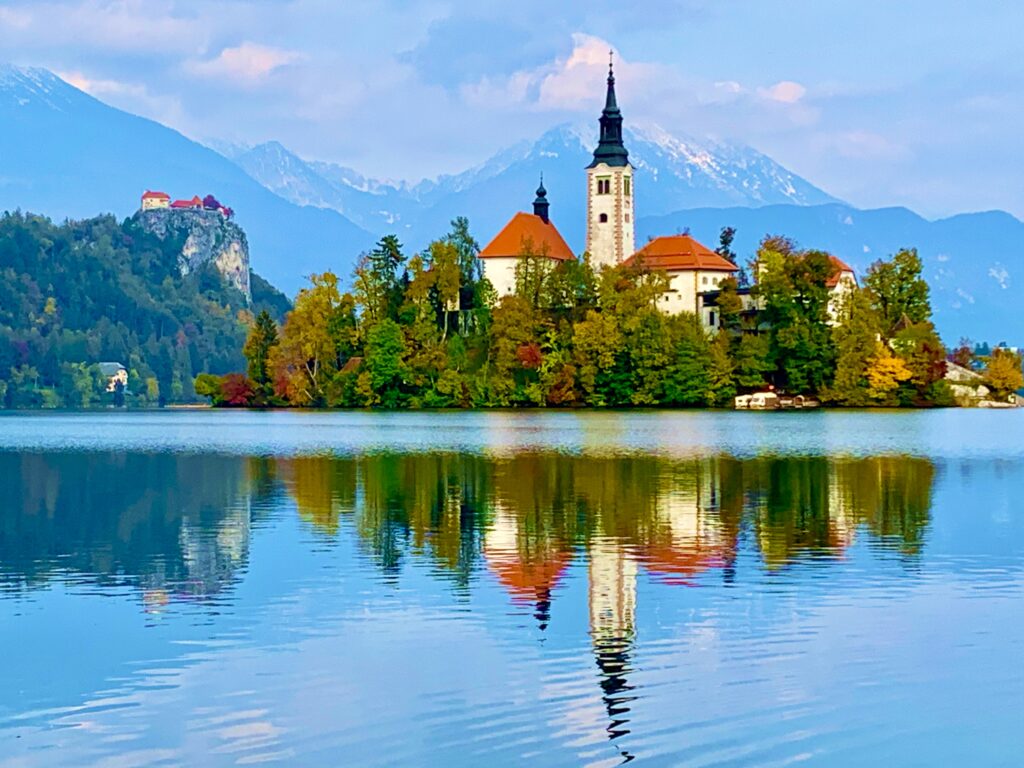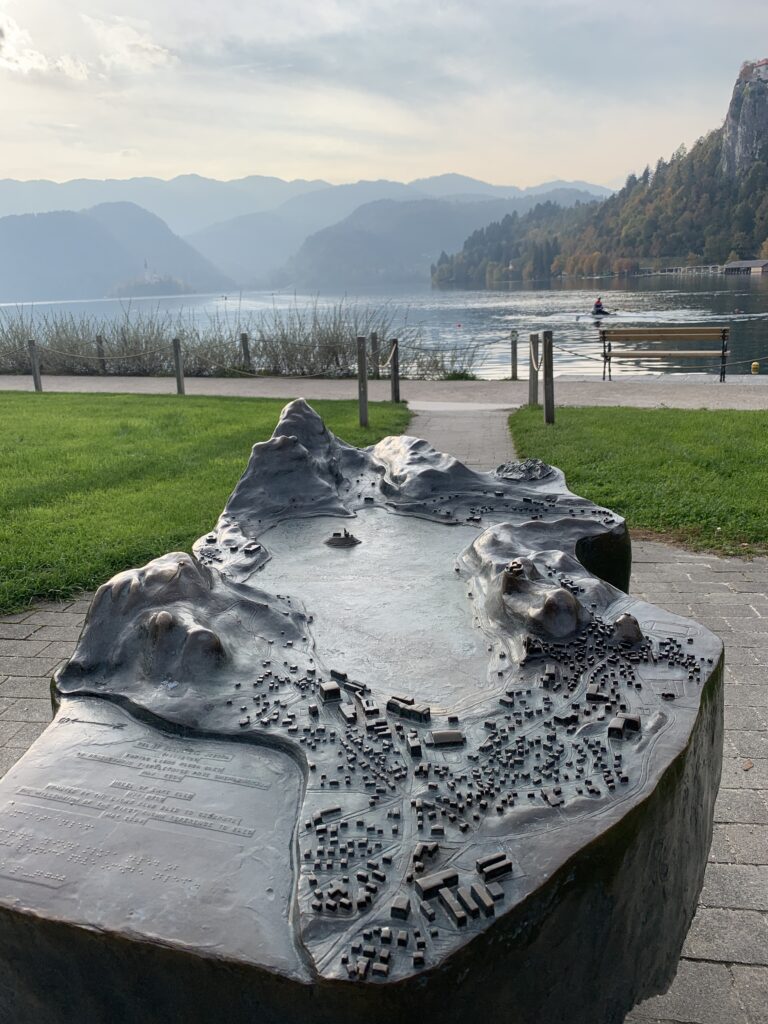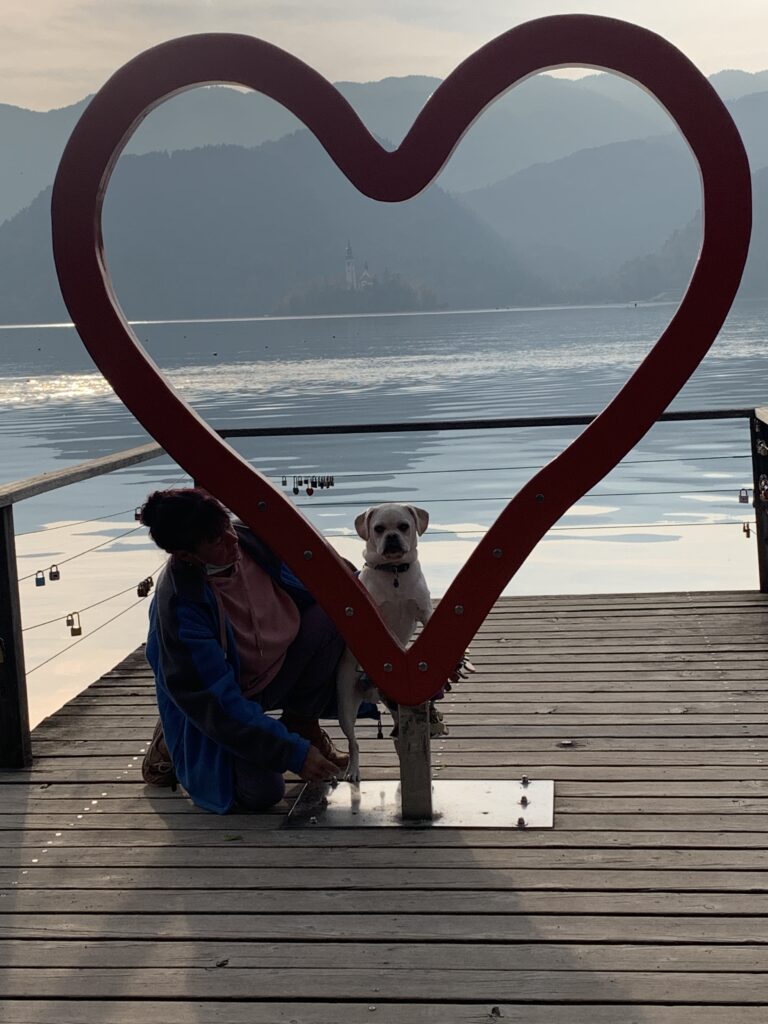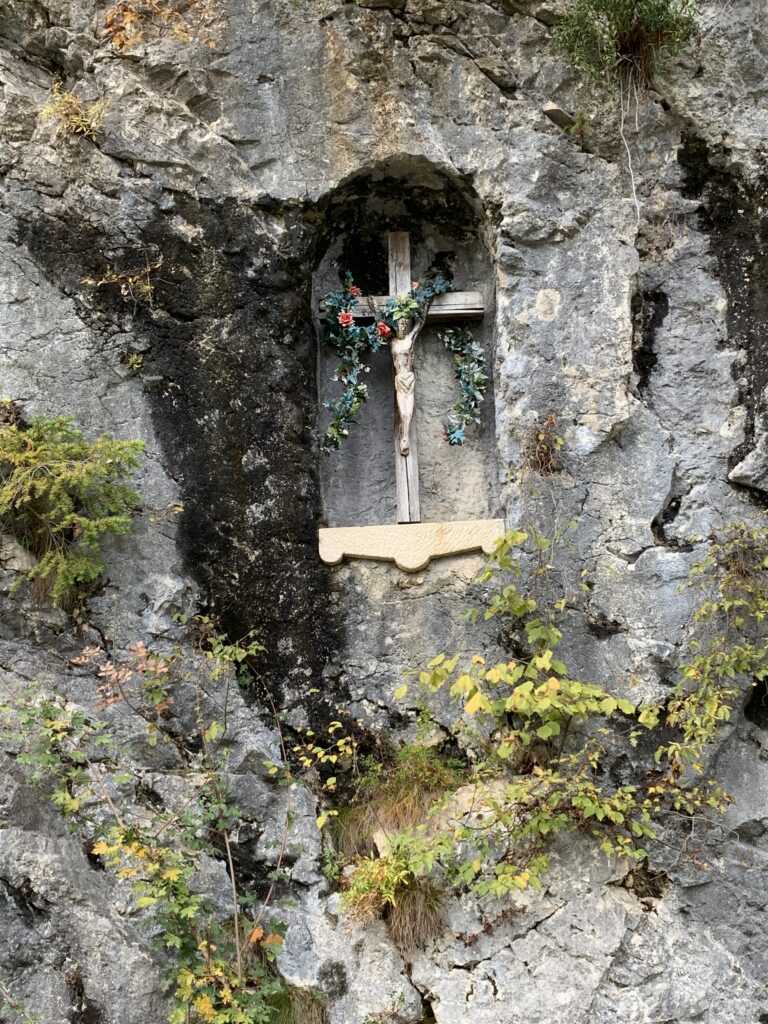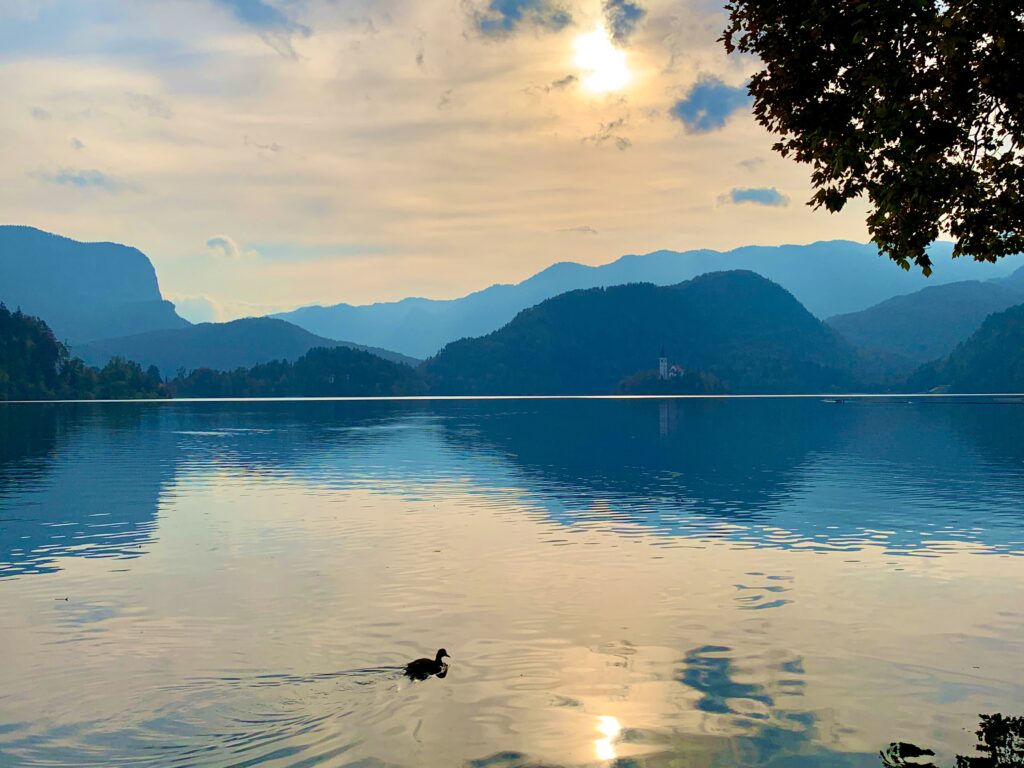Oberammergau is a small town of 5,000 people in the Ammer Valley at the foot of the Kofel Mountain. The town is known primarily for it’s Passion Play which is held every 10 years and to a lesser extent for it’s woodcarvers (there are lots of them) but it deserves a mention too for once being the home of a certain Franz Zwinck.
Franz Zwinck was a house painter who focused mostly on exteriors and who lived in Oberammergau during the late 18th century. It was he who started painting the frescoes, common throughout Bavaria, which so enhance the appearance of the Region’s pastel coloured buildings. The frescoes are known as Luftlmarelei and are named after the house he lived in and presumably painted: Zum Luftl. Not many people know that.
As already strated, Oberammergau is best known for it’s Passion Play which was first performed in 1634 and has been performed during every year ending in a zero since then with exceptions only of 1920, 1940 and 2020. The play in 1920 was postponed to 1922 because of post World War 1 austerity. The play in 2020 has been postponed to 2022 because of Covid and the play in 1940 was cancelled because of World War 2 but, countering that, extra productions were staged in 1934 (300th anniversary) and 1984 (350th anniversary).
The Play came about after a man returning to the village in 1633 for Christmas brought the bubonic plague with him. He and countless others died until the surviving villagers made a pledge that, if God were to spare them any more deaths, they would stage a passion play every 10 years during which they would re-enact the suffering, death and resurrection of Jesus Christ. It is said that the deaths stopped from that moment and that those then sick with the plague all recovered.
So began the Passion Play which now directly involves over 2,000 actors, singers, instrumentalists and technicians – all of whom must be residents of Oberammergau – and which nowadays attracts the best part of half a million spectators to 100 performances during the period May to October.
Like so many places we have visited during this tour, Covid has seen to it that most places are empty of tourists. That proved to be the case in Oberammergau too. After a very pleasant wander around a remarkably empty town, Vanya and I adjourned to a baker coffee shop and enjoyed some quite wonderful cakes with our coffee – If I’m honest, I ate all the cakes.
I’ll finish with a few random photos of the town…

